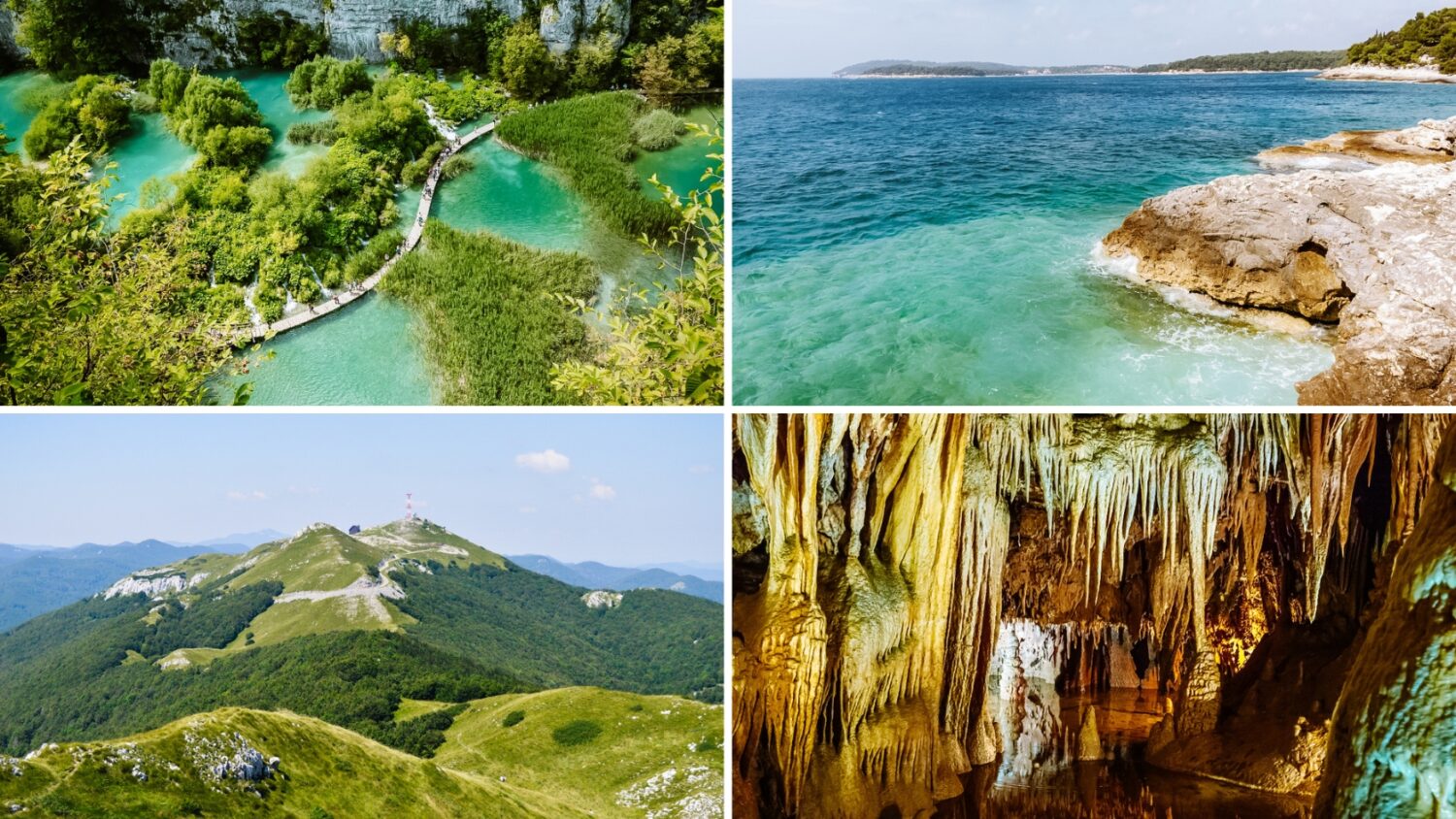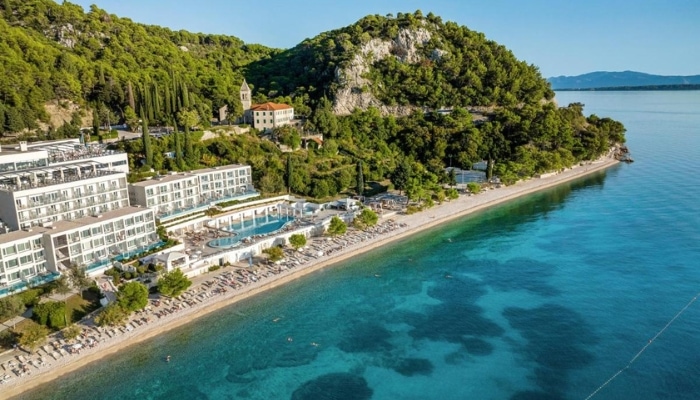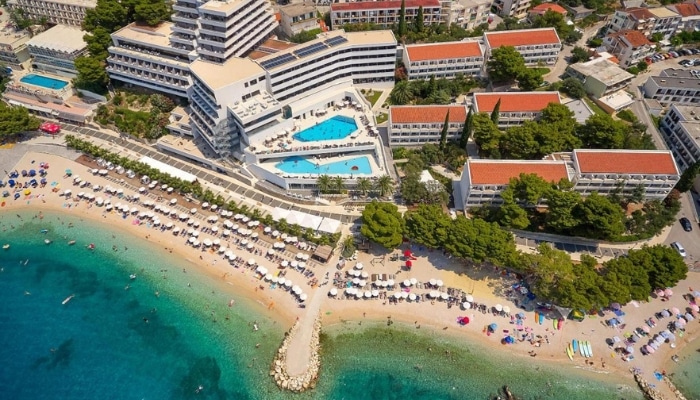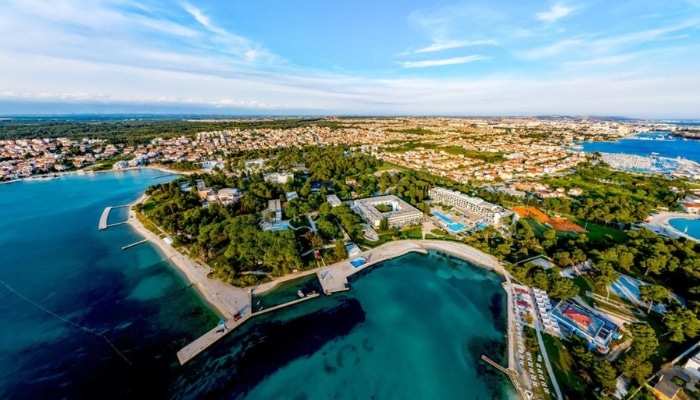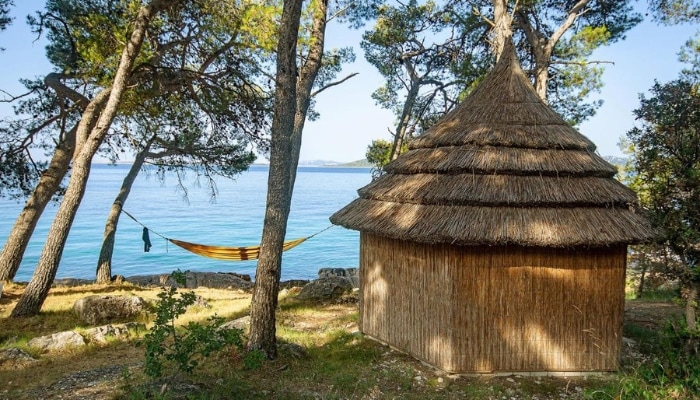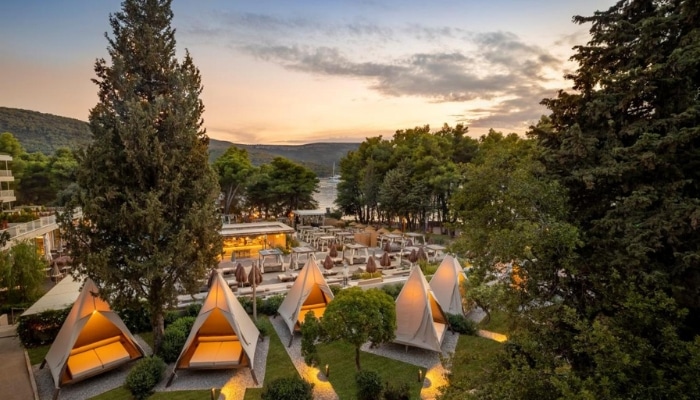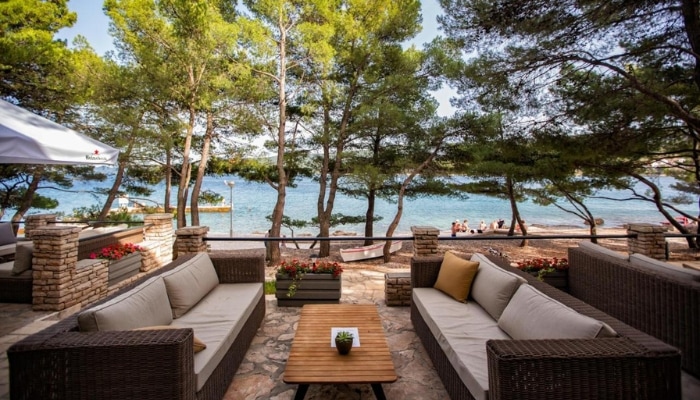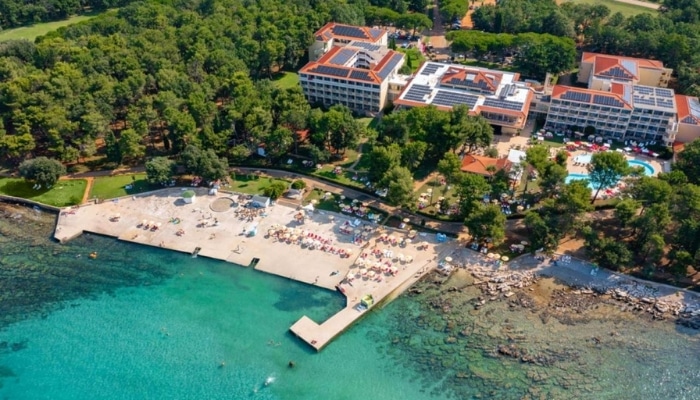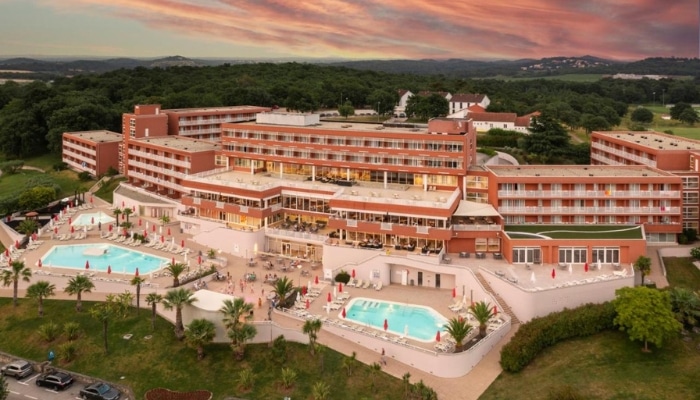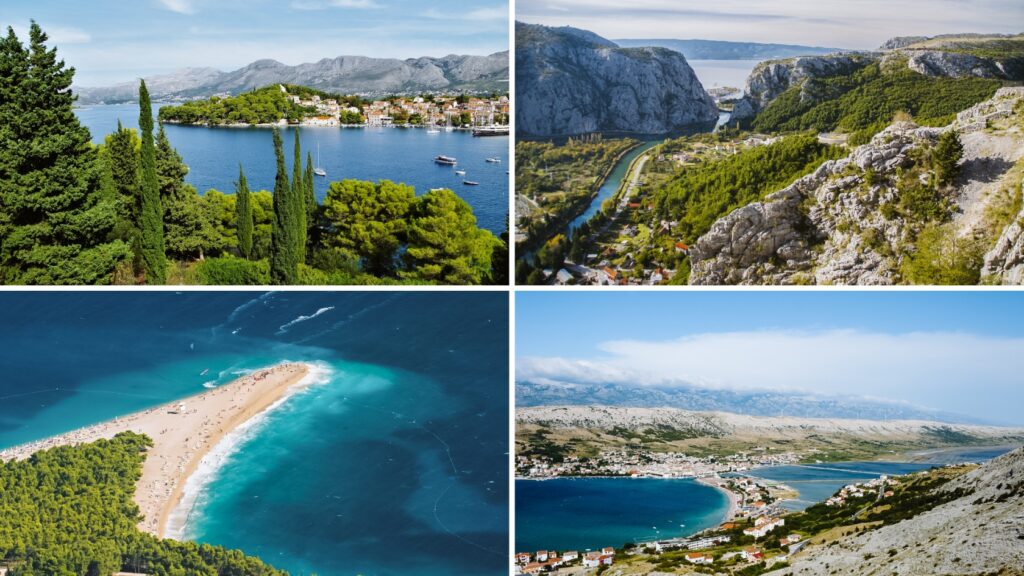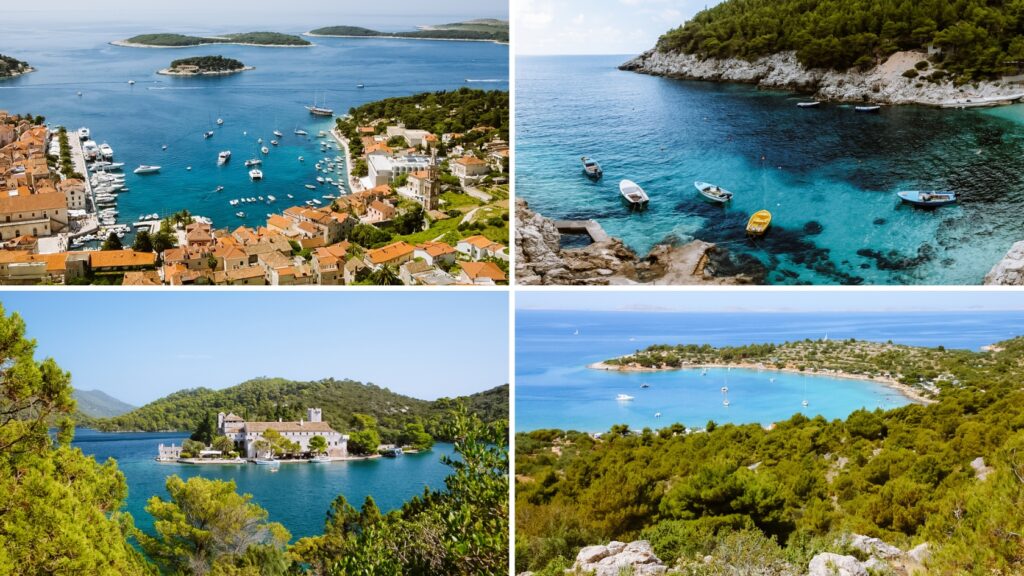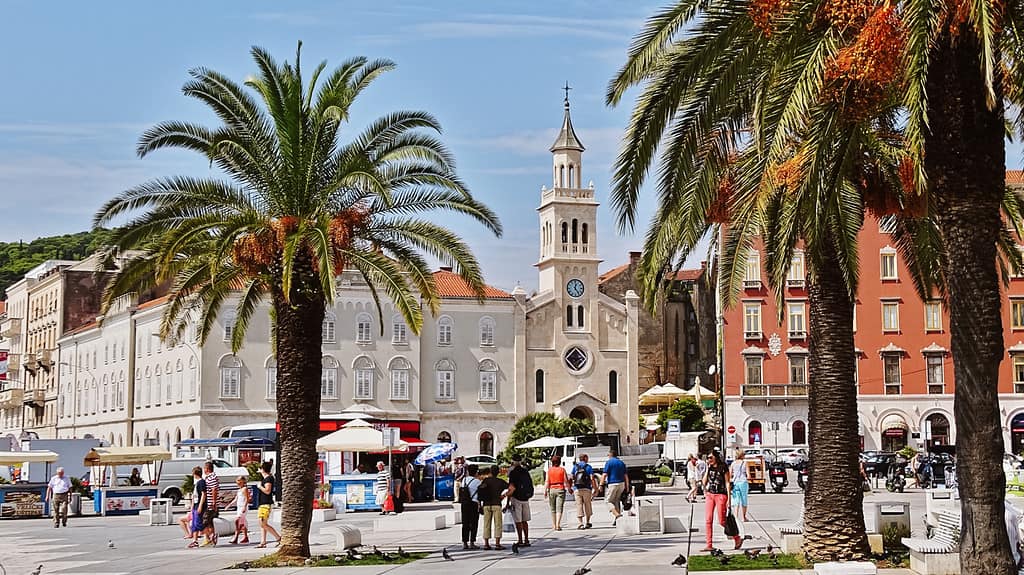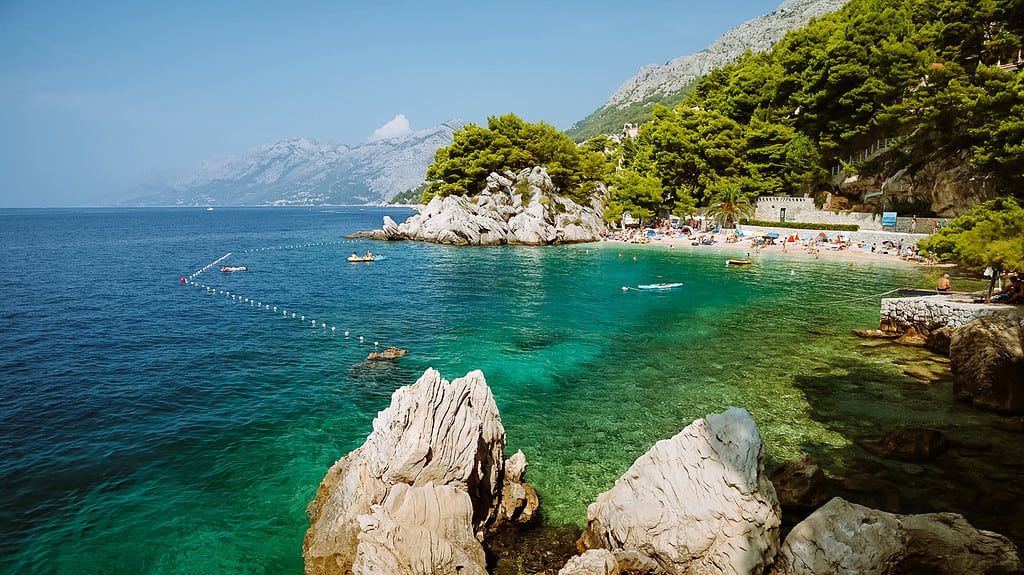Croatia is one of the most beautiful countries in Europe, hiding endless coastlines, breathtaking views and untouched nature. From the azure waters of the Adriatic to the ancient monuments scattered across the country, here’s a list of the most beautiful places to see and visit in Croatia.
- Best things to do in Croatia
- 1. Plitvice Lakes
- 2. Dubrovnik
- 3. Makarska Riviera
- 4. Diocletian's Palace
- 5. Trogir
- 6. Krka National Park
- 7. Sibenik – things to do in Croatia
- 8. Paklenica National Park
- 9. Motovun
- 10. Rovinj
- 11. Hvar
- 12. Mljet National Park
- 13. Pasjača beach
- 14. Korčula
- 15. Telašćica Nature Park
- 16. Rastoke village
- 17. Peljesac peninsula
- 18. Kamenjak Nature Park
- 19. Zlatni Rat
- 20. Risnjak National Park
- 21. Pula – things to do in Croatia
- 22. Baredine Cave
- 23. Kornati National Park
- Best things to do in Croatia on the map
- The best booking resources for holidays in Croatia
- More information about Croatia
Best things to do in Croatia
1. Plitvice Lakes
Plitvice Lakes are not only one of the most beautiful places in Croatia, but also in Europe. This is a place you can’t miss when visiting Croatia.
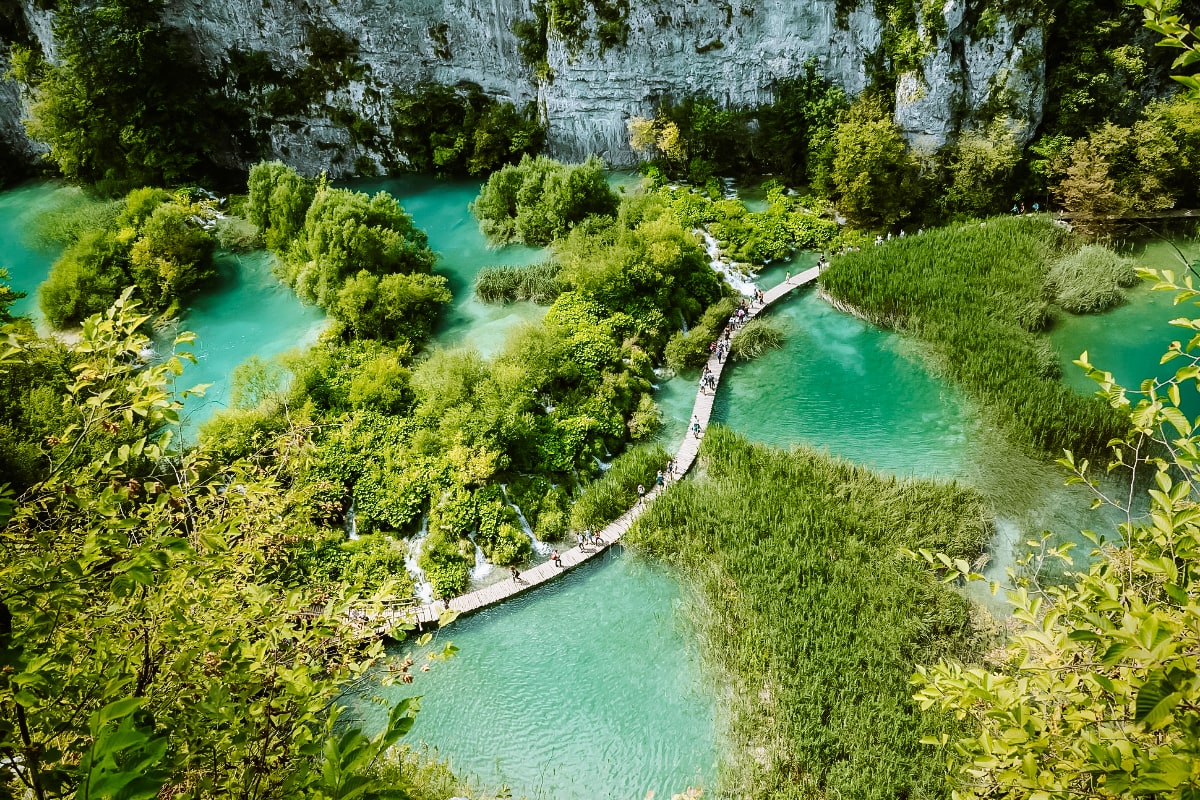
The Plitvice Lakes are a breathtaking site, consisting of 16 cascading lakes connected by a multitude of small and large waterfalls. The whole complex is divided into the Lower and Upper Lakes, with the Lower Lakes with the massive Veliki Slap waterfall being more impressive to look at. The upper lakes are larger and quieter.
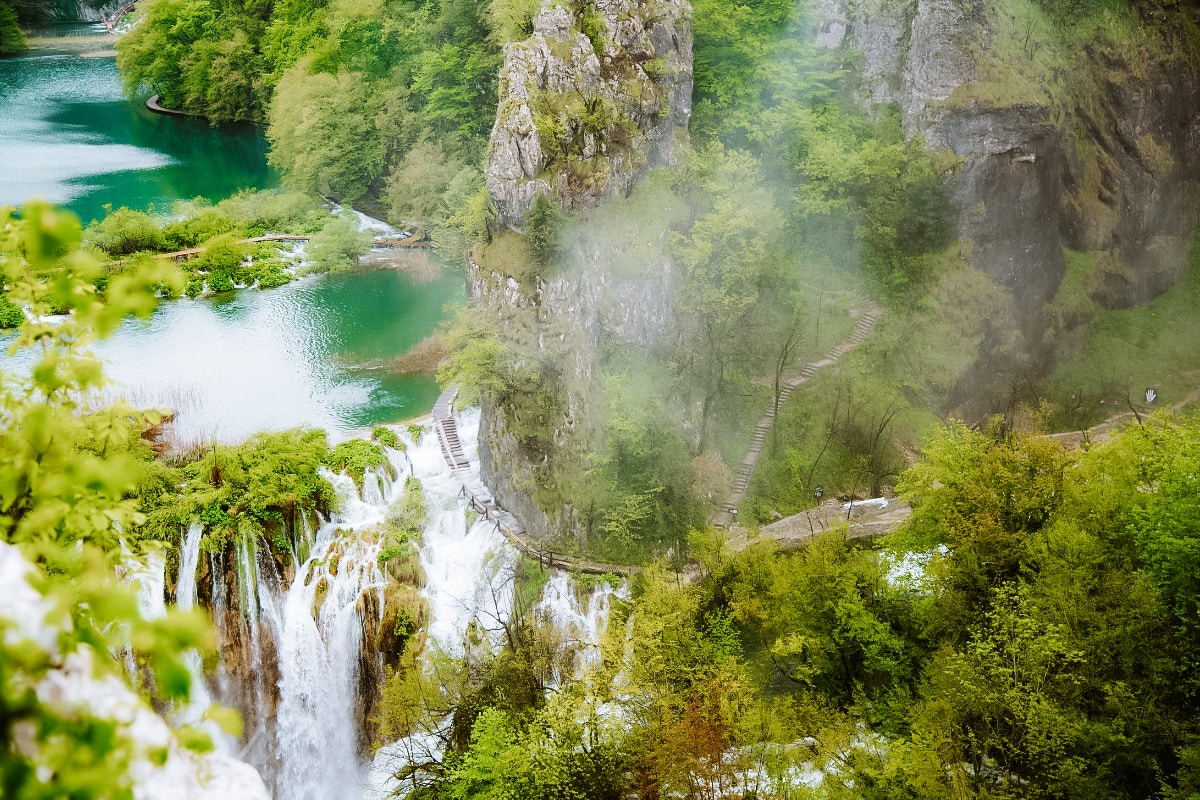
The water in the lakes comes from the Bijela Rijeka and Crna Rijeka rivers, which converge in the park and form natural barriers of calcareous sediments, making the lakes constantly changing and expanding. The colour of the water varies from azure to green to dark blue, due to the mineral composition of the water and the angle of the sun’s rays.
The lakes are connected by wooden walkways, paths and viewpoints from which you can enjoy the best views of the lakes with waterfalls. There are trails of different lengths and difficulty levels to choose from. You can spend the whole day here, there are refreshments and toilets.
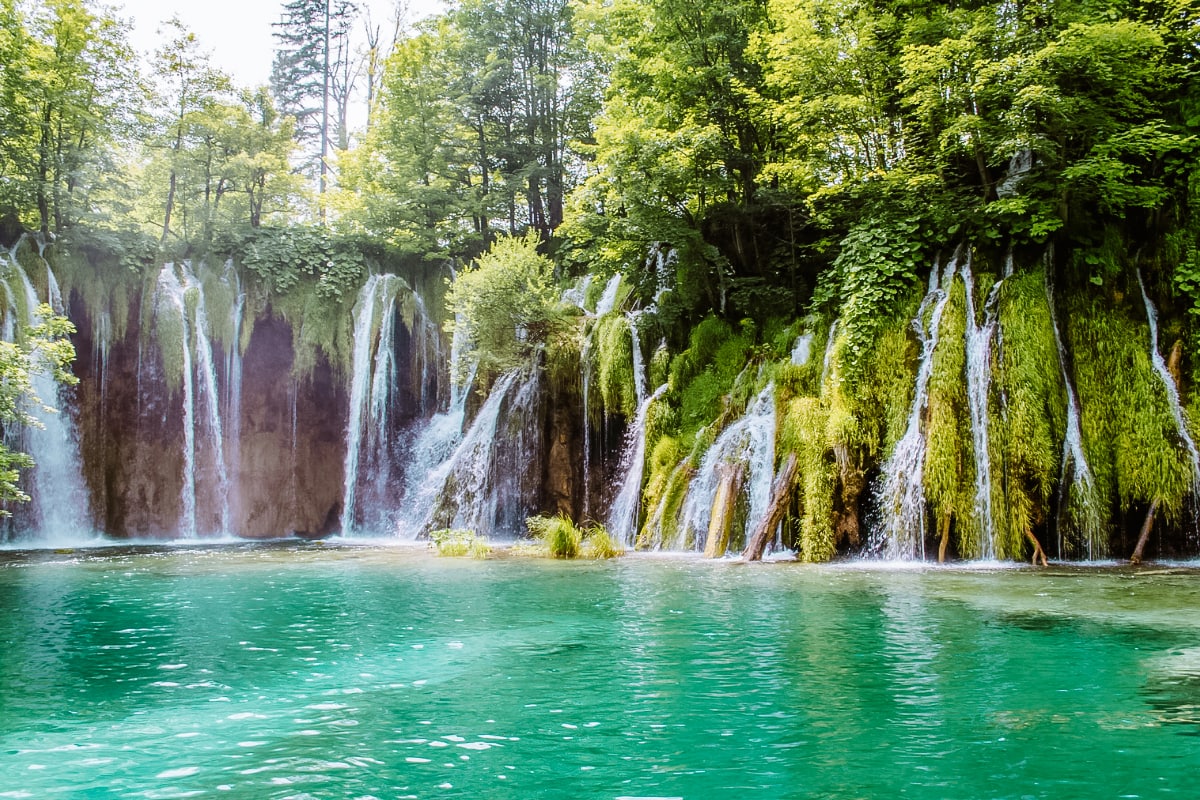
Practical tips before visiting Plitvice Lakes
- Wear sturdy shoes.
- Plan your visit for spring or autumn, when the aquatic spectacle is at its best due to the greater amount of water. At the same time, there are fewer people.
- If you’re visiting Plitvice Lakes in summer, arrive right at opening time, or later in the afternoon when the biggest crowds leave.
- Book your tickets online.
- When choosing your tickets, you will choose your entrance – there is a choice of entrance 1 just off Veliki slap or entrance 2 at the upper lakes. I recommend to choose entrance 1 – it is quieter here and you can see the waterfall in all its glory right at the beginning without crowds.
- Take plenty of water in summer.
2. Dubrovnik
Dubrovnik, known as the “Pearl of the Adriatic”, is one of the most famous and most visited cities in Croatia.
Its ancient walls, which stretch for more than 2 kilometres around the town, tell stories spanning centuries and provide breathtaking views of the azure waters of the Adriatic Sea and a medieval town full of history. Walking along these walls you will discover imposing fortresses, narrow stone streets and magnificent Gothic, Renaissance and Baroque palaces.
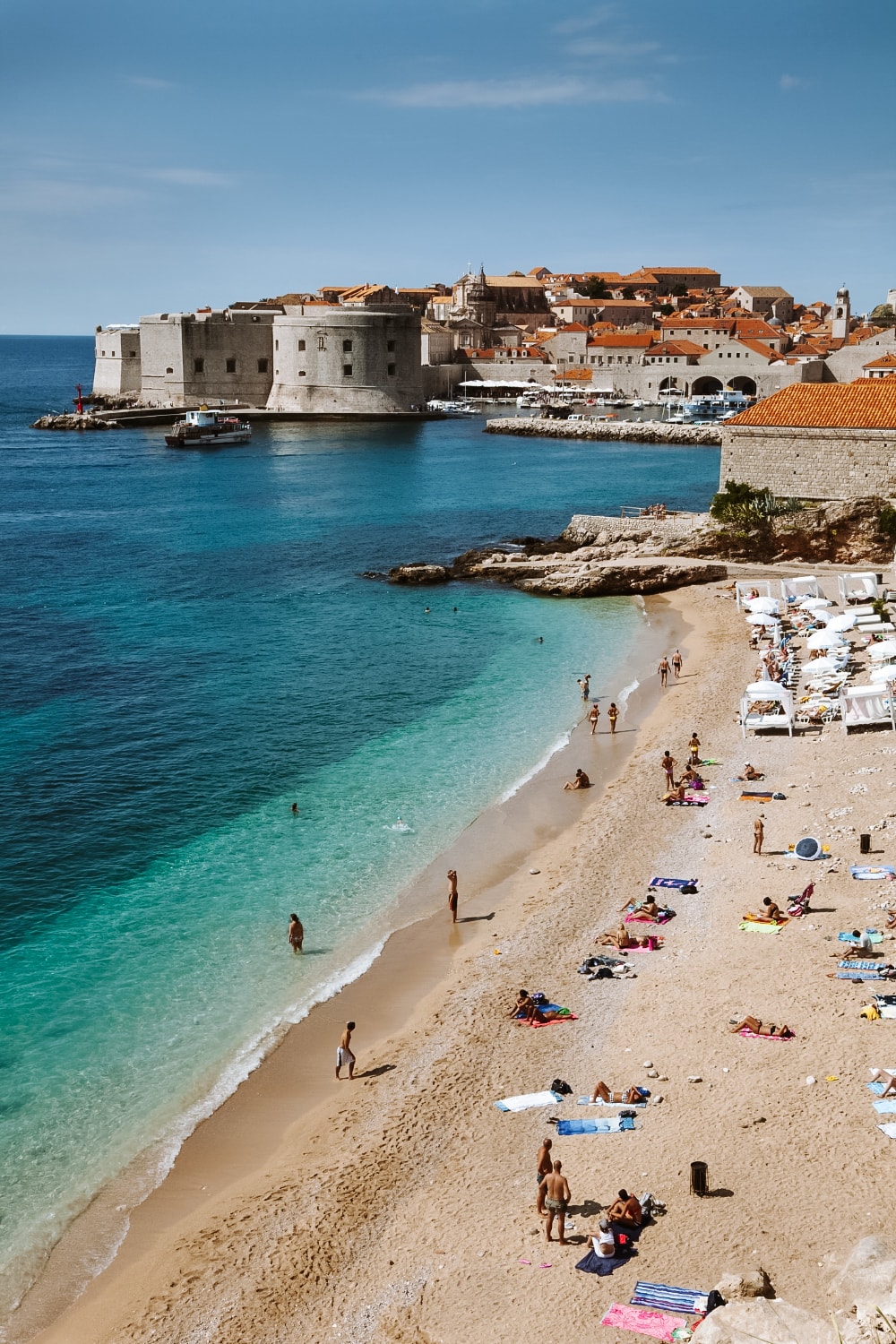
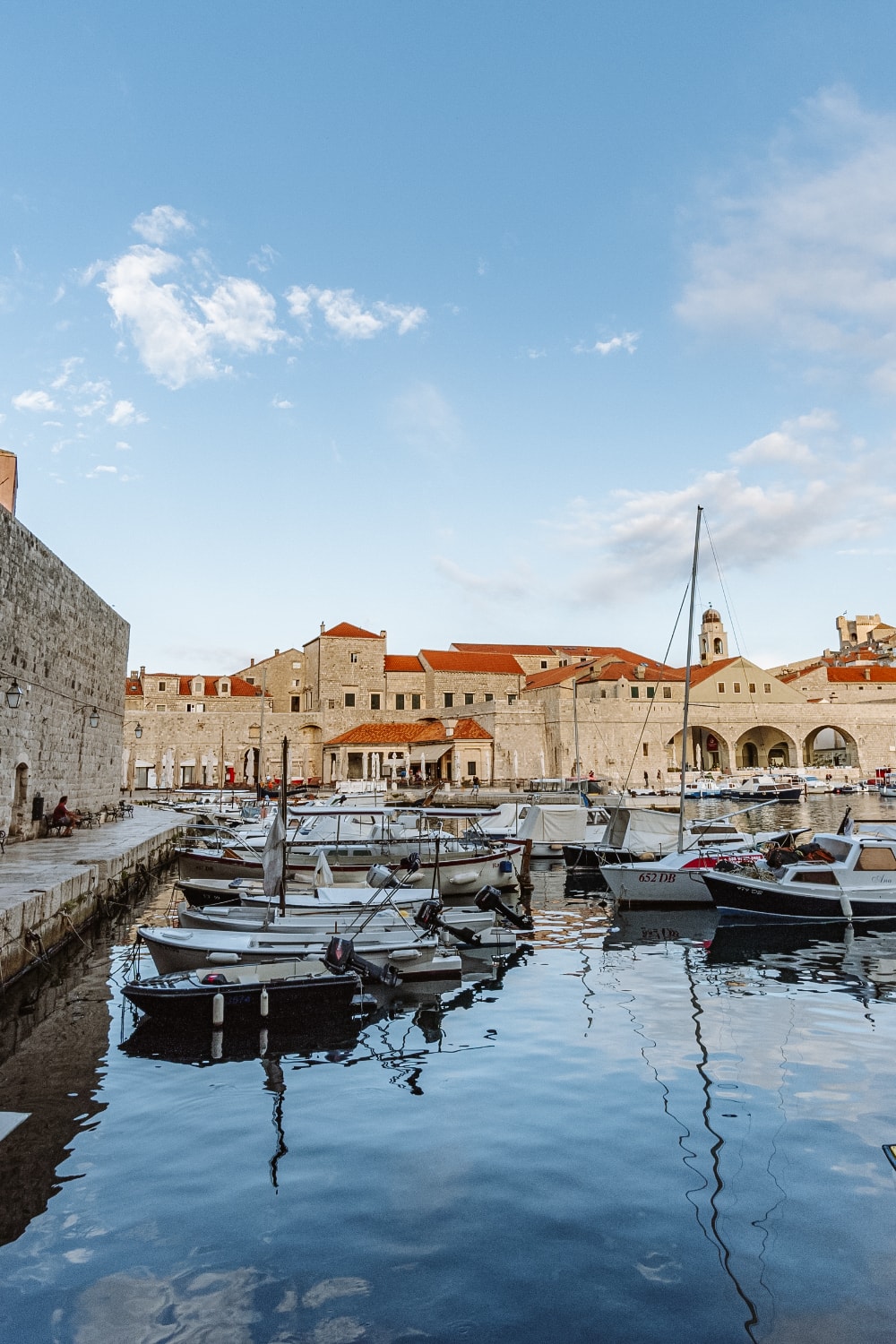
The old town is a UNESCO World Heritage Site and has also appeared in the popular Game of Thrones series.
Take a cable car ride over the city and enjoy the view of Dubrovnik in all its glory.
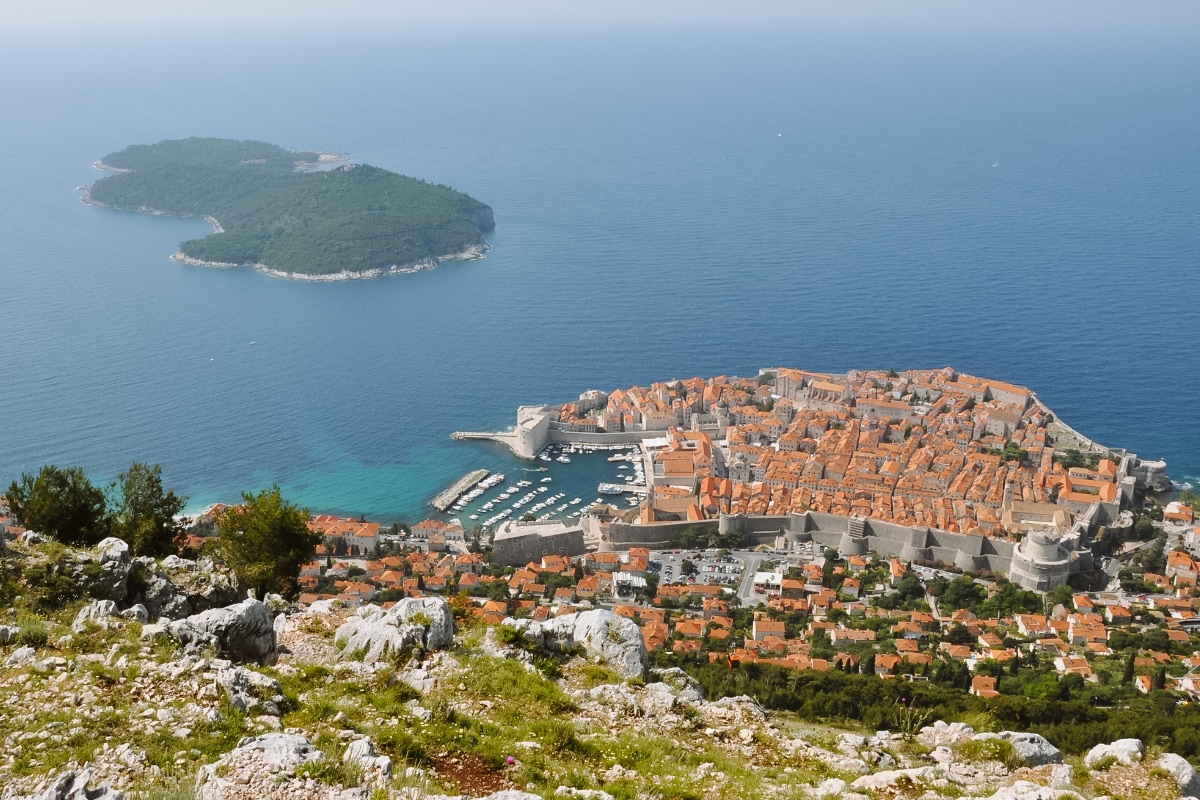
3. Makarska Riviera
The Makarska Riviera, stretching beneath the majestic Biokovo Mountains and fringed by the azure waters of the Adriatic Sea, is one of the most popular summer destinations in Croatia.
This stretch of the Croatian coast is famous for its long pebble beaches, crystal clear sea and picturesque seaside towns that are perfect for an unforgettable holiday.
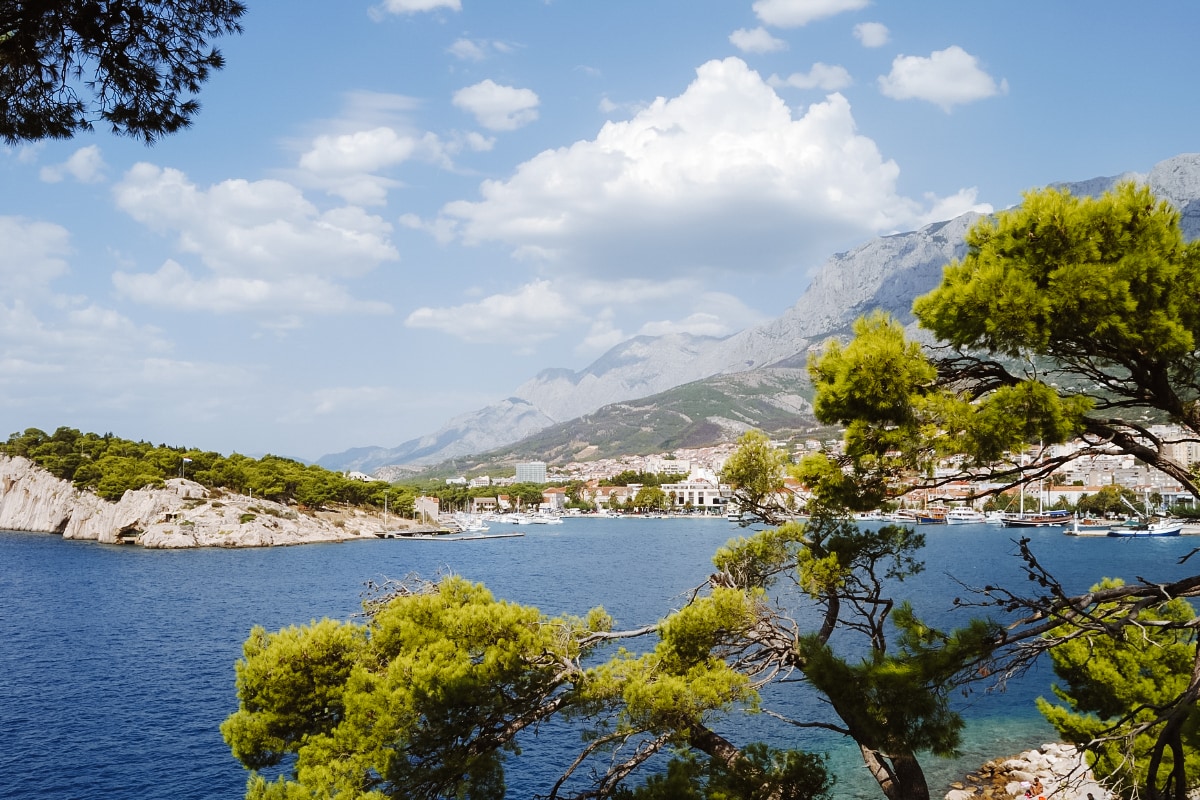
From the picturesque town of Makarska, to the cosy Baška Voda, to the peaceful Tučepi, each town on the Riviera offers its own unique atmosphere and charm.
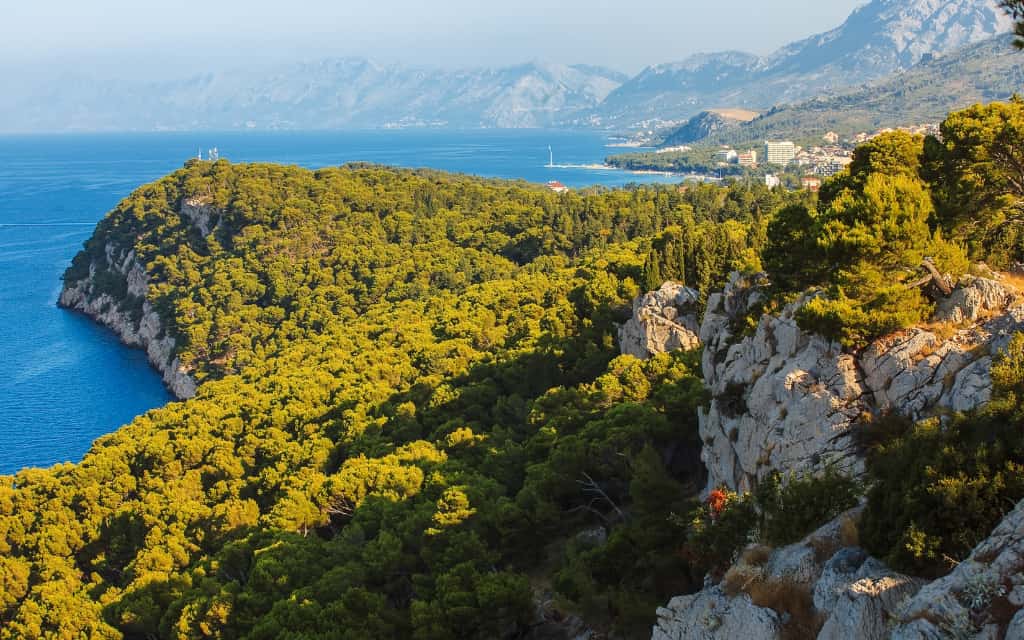
Take a hike in Biokovo Nature Park, where you can enjoy fantastic views of the Adriatic coast and inland. The trails vary in difficulty, from a few hours to a full day. And who knows, you might even see wild horses roaming around along the way.
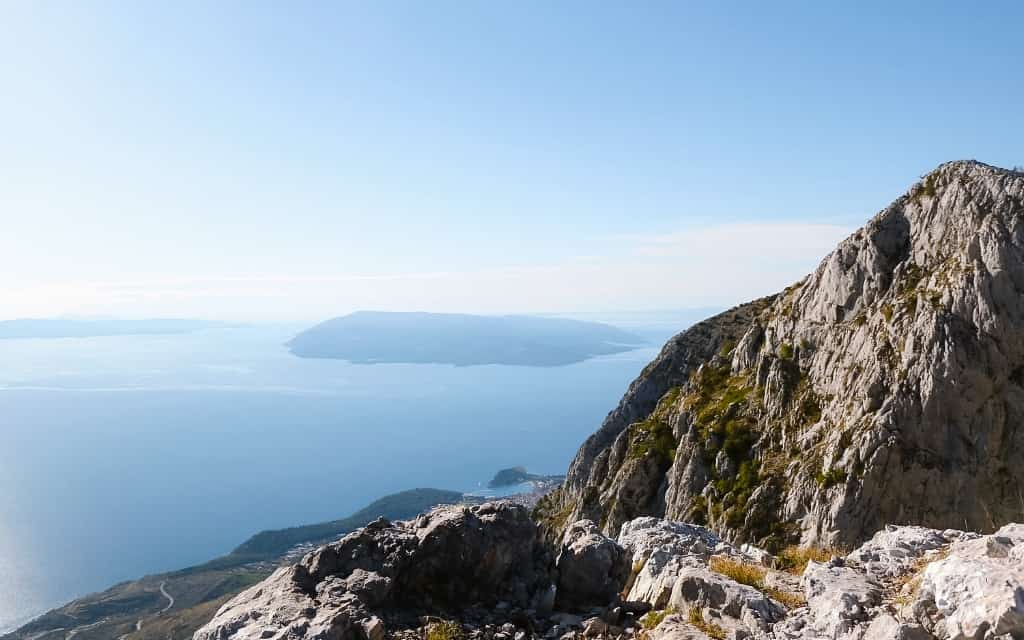
☞ Read our detailed travel guide to the Makarska Riviera for everything you need for a perfect holiday.
The big attraction of the Biokovo Park is the Biokovo Skywalk at an altitude of 1,228 metres. You can imagine this as a 12-metre long glass walkway that stretches over the edge of the cliff.
Hotels in Makarska 😴
4. Diocletian’s Palace
We move north of the Makarska Riviera, where Split, the second largest city in Croatia, is located. It is an important port, which is also home to one of the most important monuments in Croatia – Diocletian’s Palace.
The imposing palace complex of Diocletian’s Palace was built in the 3rd century AD and covers an area of approximately 31 000 square metres. It is one of the best preserved examples of Roman architecture in the world.
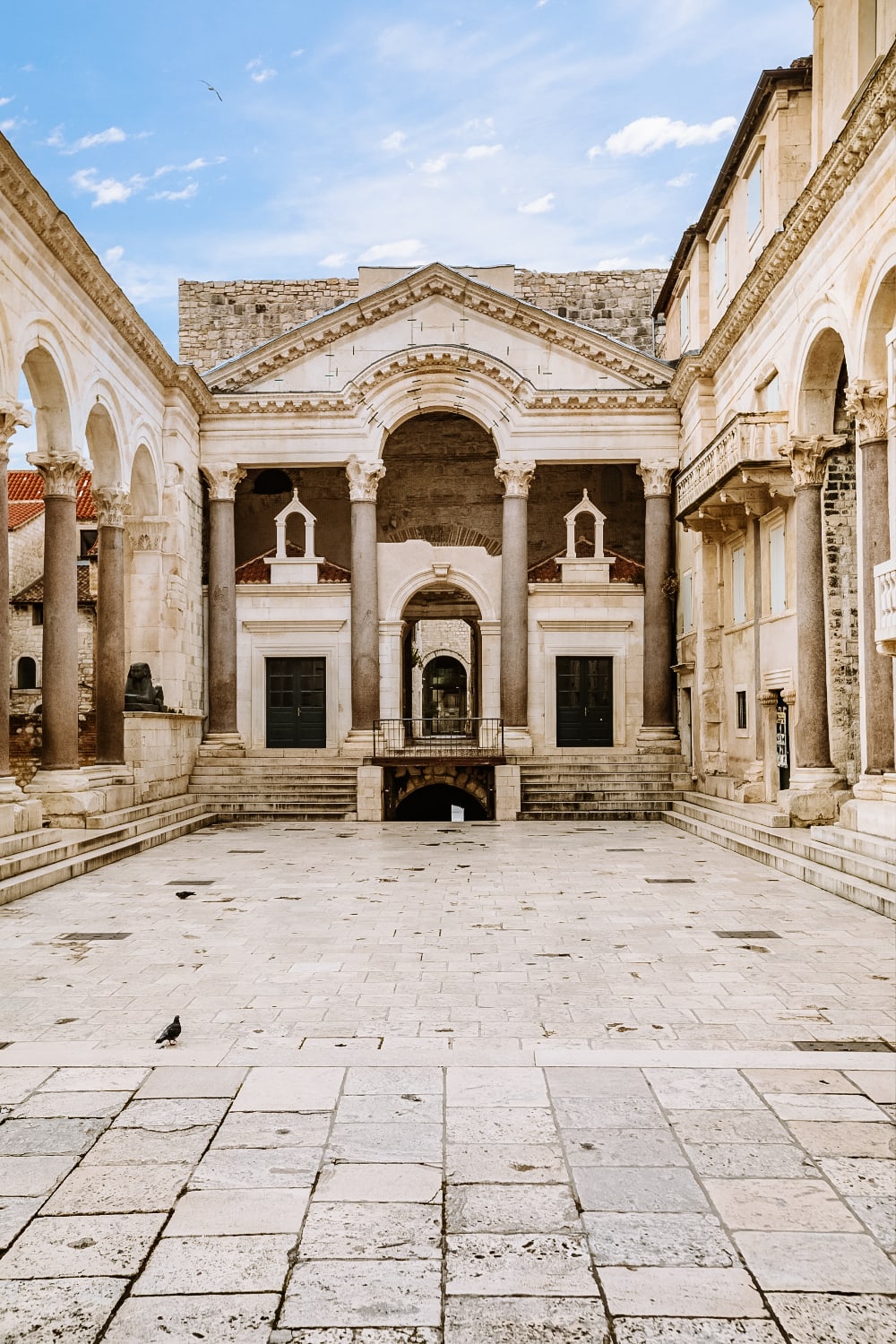
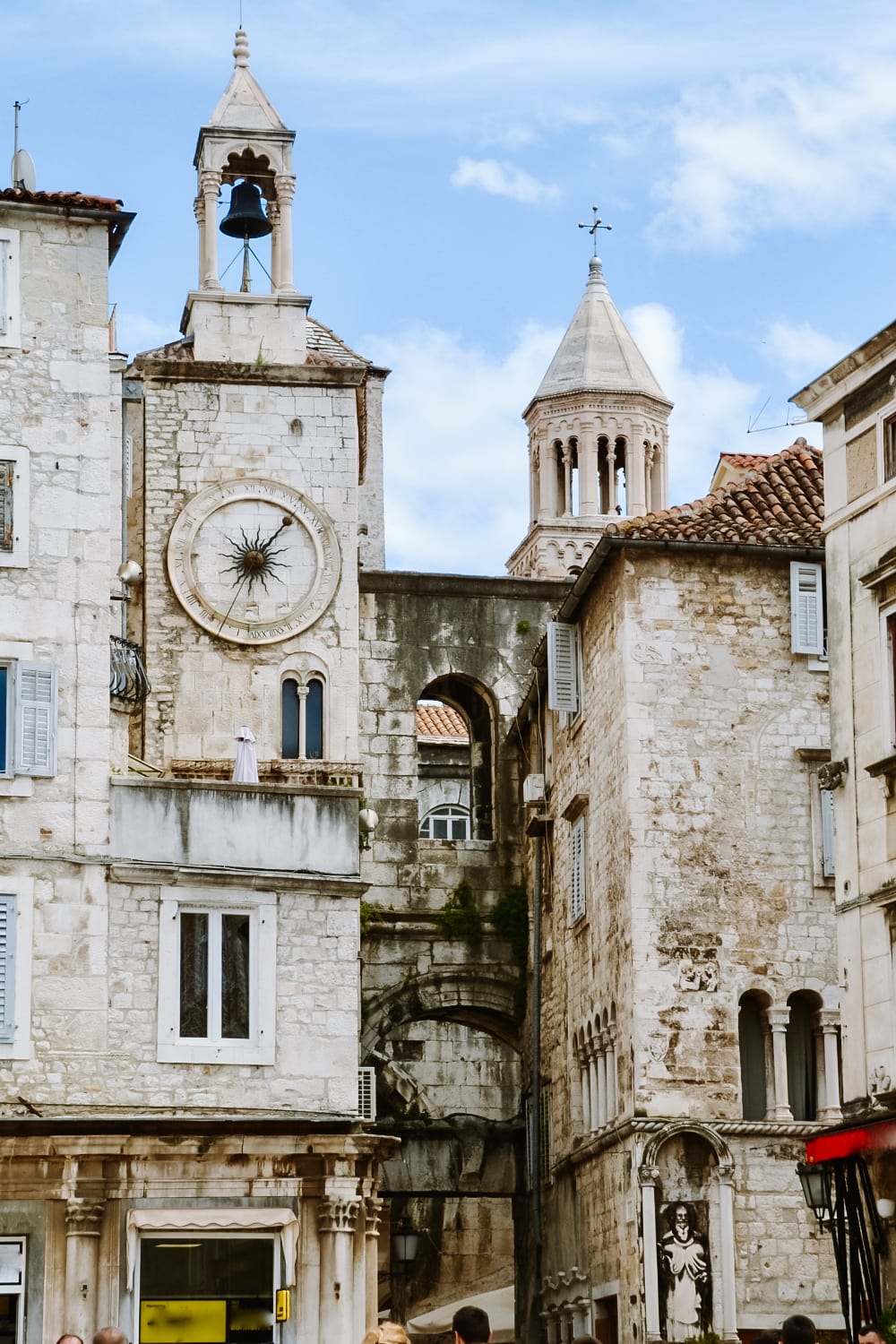
Inside its walls, you can wander through a labyrinth of narrow streets, courtyards and historic buildings that house shops, restaurants and bars. You can also go to the underground halls beneath the palace to see the ancient foundations.
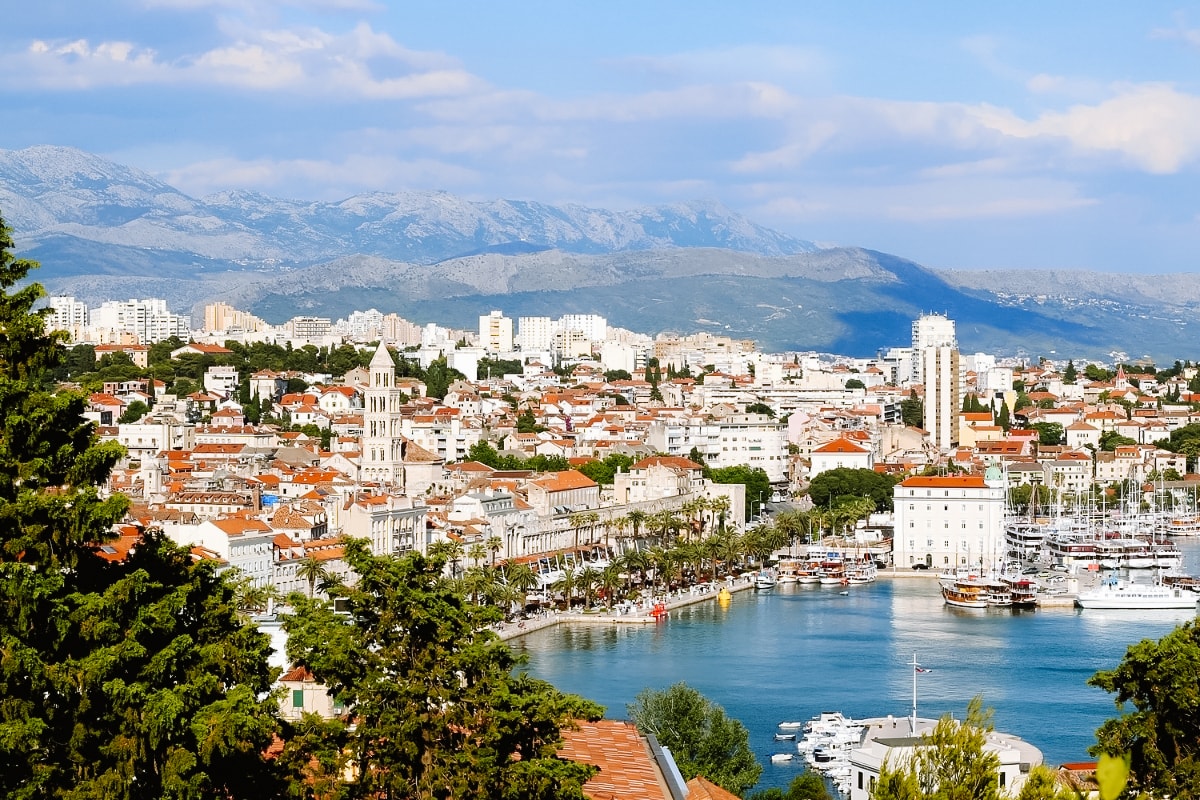
The most interesting part of Diocletian’s Palace is the Peristil, the central square surrounded by colonnades, which in the past served as the main entrance to the imperial apartments.
☞ For more information about Diocletian’s Palace and how to enjoy your holiday in Split, see our travel guide to Split, Croatia.
5. Trogir
Trogir is a small but extremely rich historical town on the Dalmatian coast, a UNESCO World Heritage Site thanks to its well-preserved medieval centre full of churches, palaces and towers.
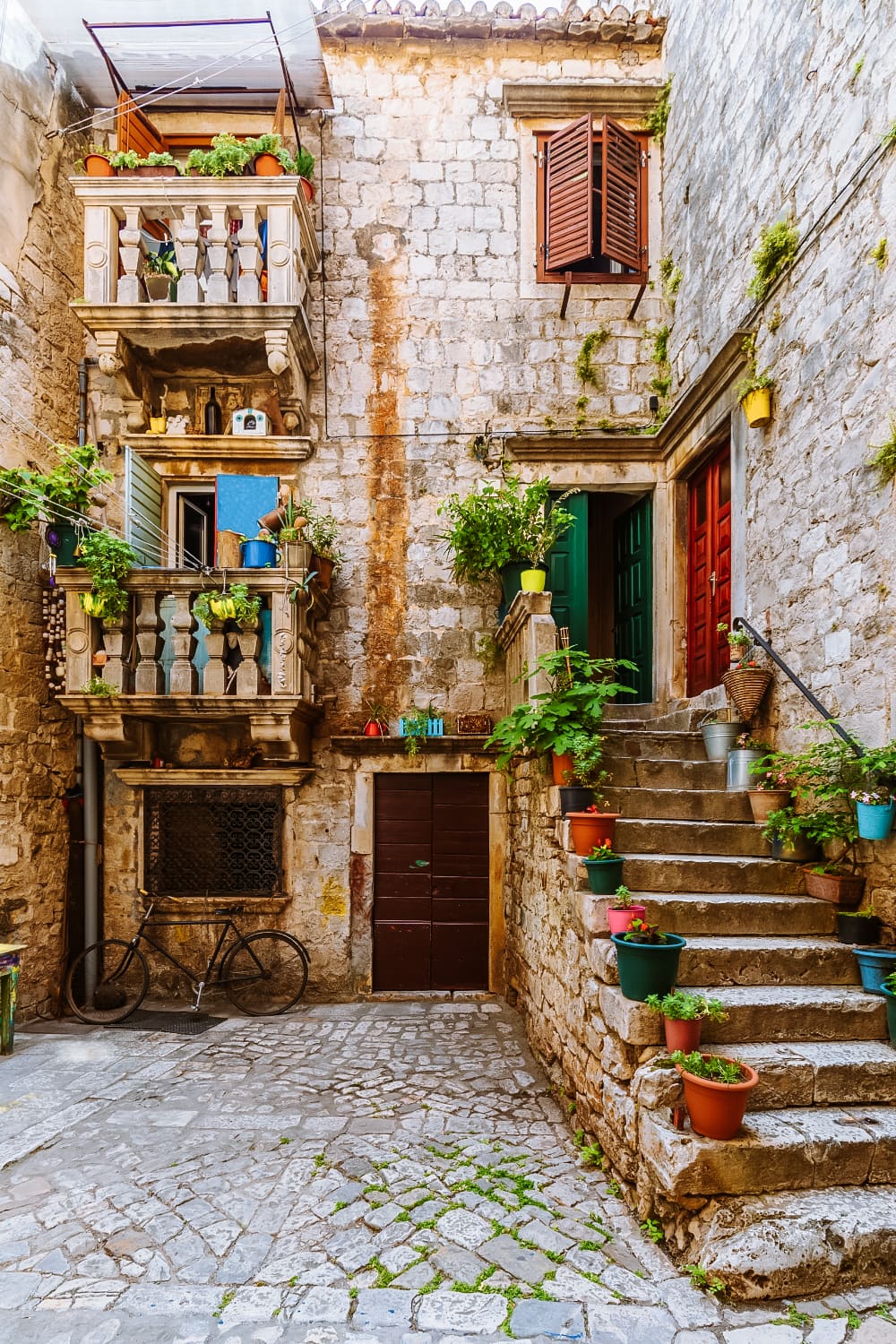
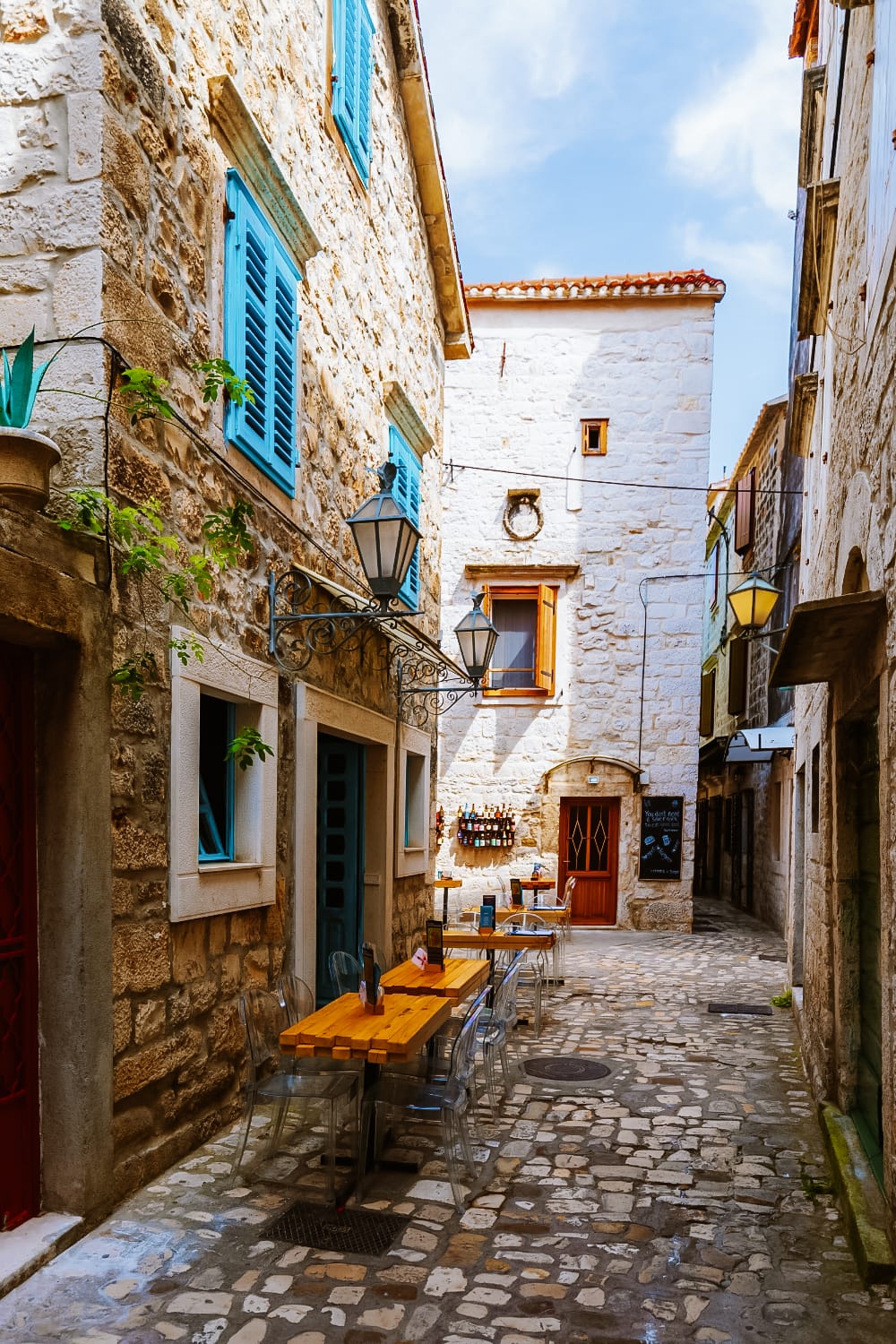
It lies on a small island connected by bridges to the mainland and the nearby island of Ciovo. One of the best ways to explore Trogir is to get lost in its narrow stone streets. Each street and square hides something unique, from small shops with handmade souvenirs to cosy cafes and restaurants.
Visit the Kamerlengo Fortress, a building from the 14th century, which offers not only a historical insight into the defensive mechanisms of medieval Trogir, but also fantastic views of the city.
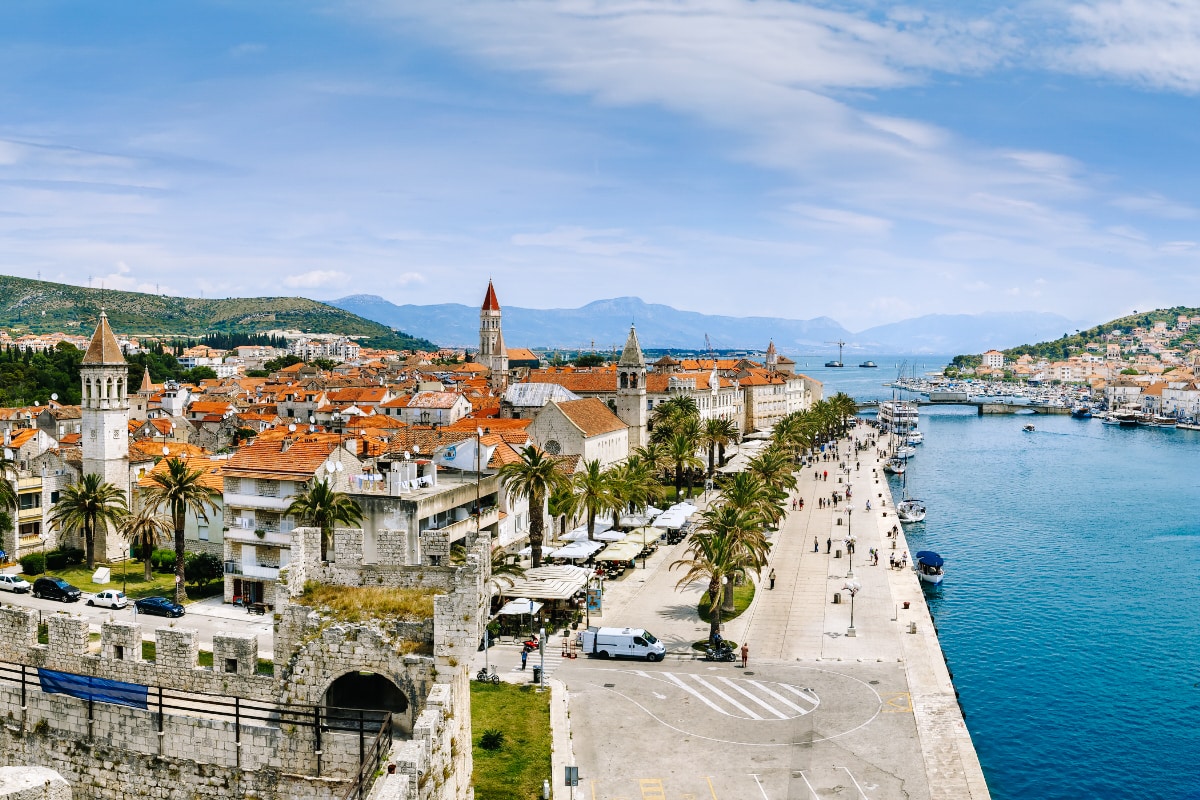
6. Krka National Park
Would you like to visit the Plitvice Lakes, but they seem too out of hand? Krka National Park is a great alternative.
It is located in central Dalmatia, near Sibenik. The park is famous for its beautiful waterfalls and green cascades, dominated by the Skradinski buk, the largest of the seven waterfalls.
Walk along the wooden walkways around the main waterfalls of Skradinski Buk and enjoy the view of the lake and the lush nature in the surroundings. And where you can’t go by foot, you can go by boat.
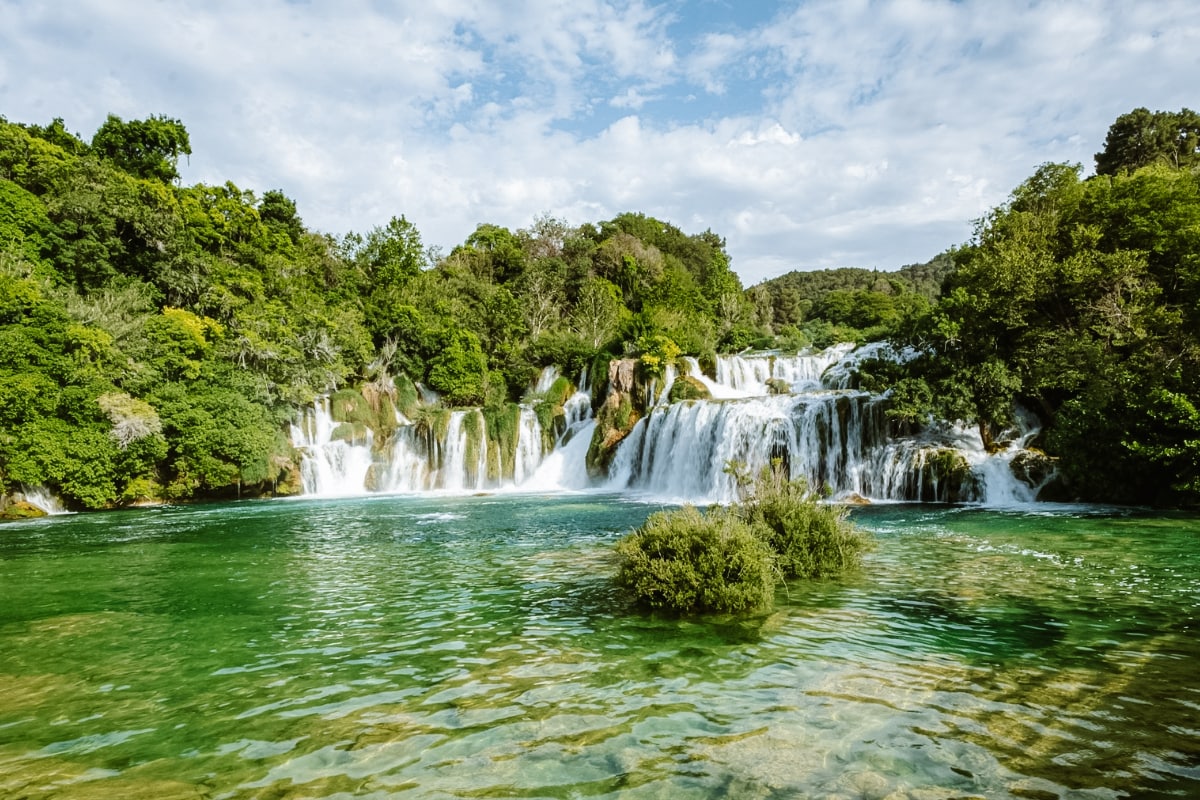
Practical information for visiting Krka National Park
- The best time to visit is in spring and autumn when the weather is pleasant. At the same time, there is the most water, so you will enjoy the best performance.
- If you want to avoid the queues, buy your tickets online.
- Comfortable and sturdy footwear is essential for exploring the park, as is sun protection and plenty of water during the summer months.
- In the summer season, arrive as early as possible to avoid the crowds.
- When visiting the park, it is necessary to stick to the marked paths and do not leave litter behind.
7. Sibenik – things to do in Croatia
Sibenik, one of Croatia’s oldest port towns, boasts one of the country’s most important Renaissance monuments, the UNESCO World Heritage Site of St. James Cathedral. The cathedral is famous for its detailed stone reliefs and its unique roof, which is made entirely of stone.
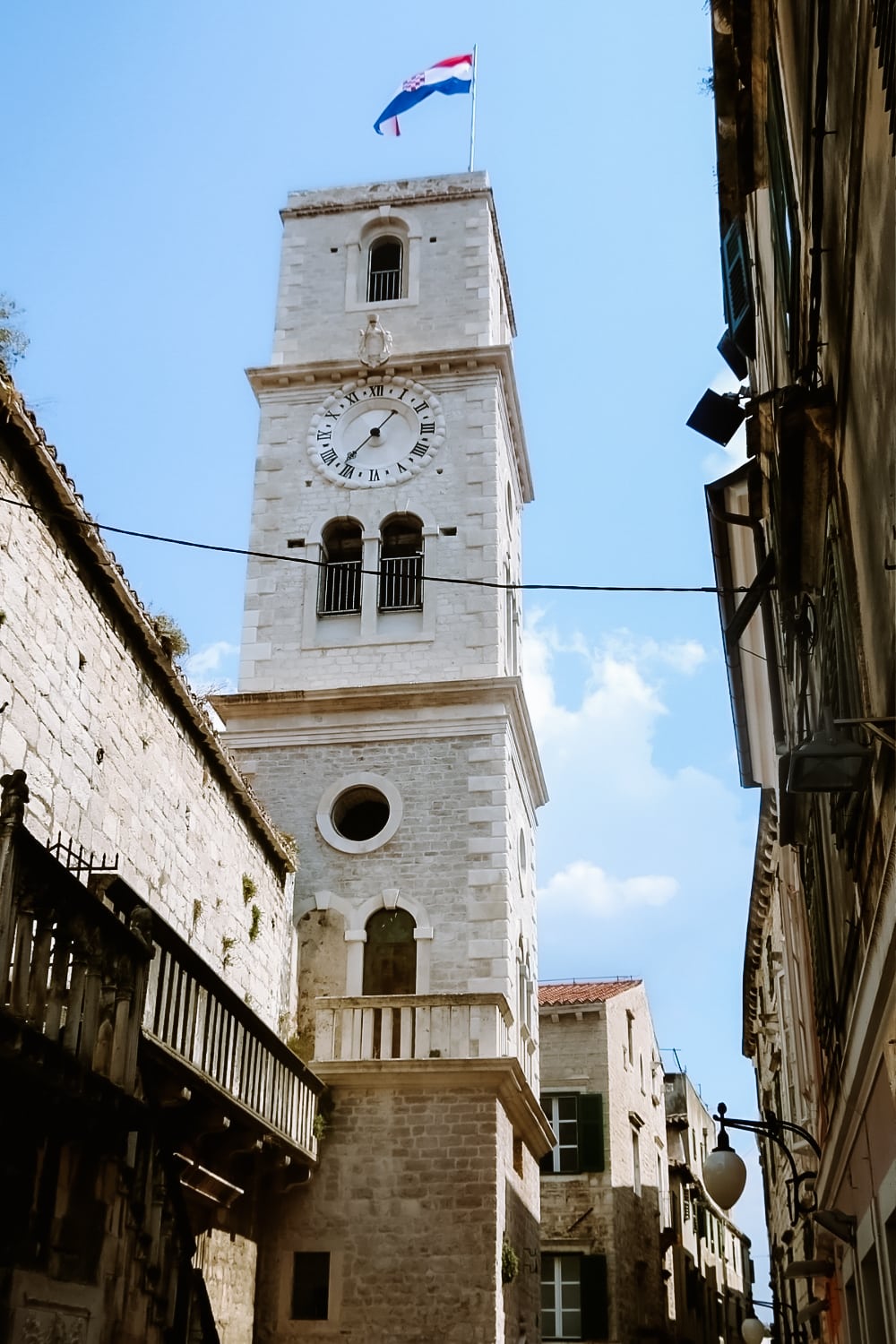
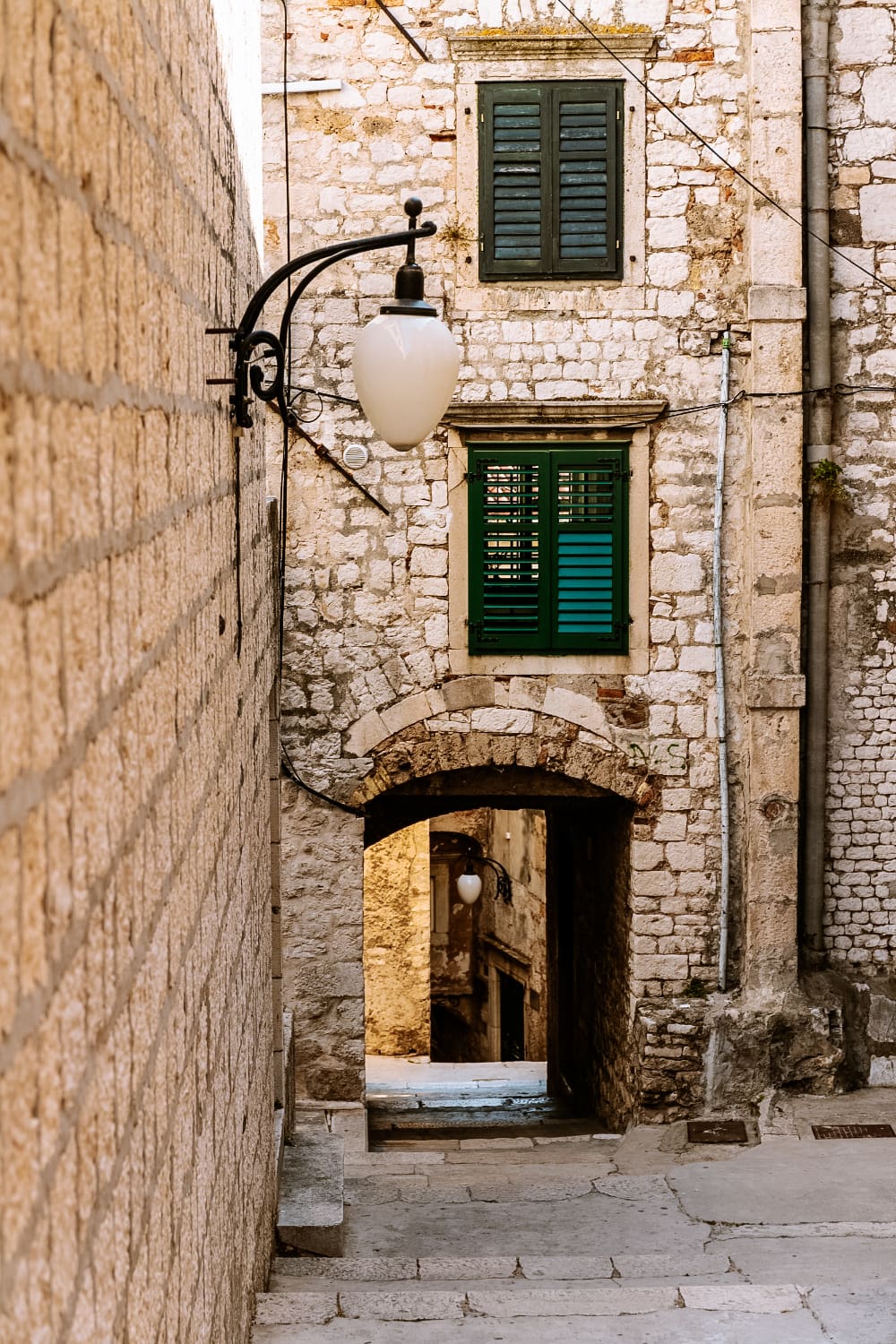
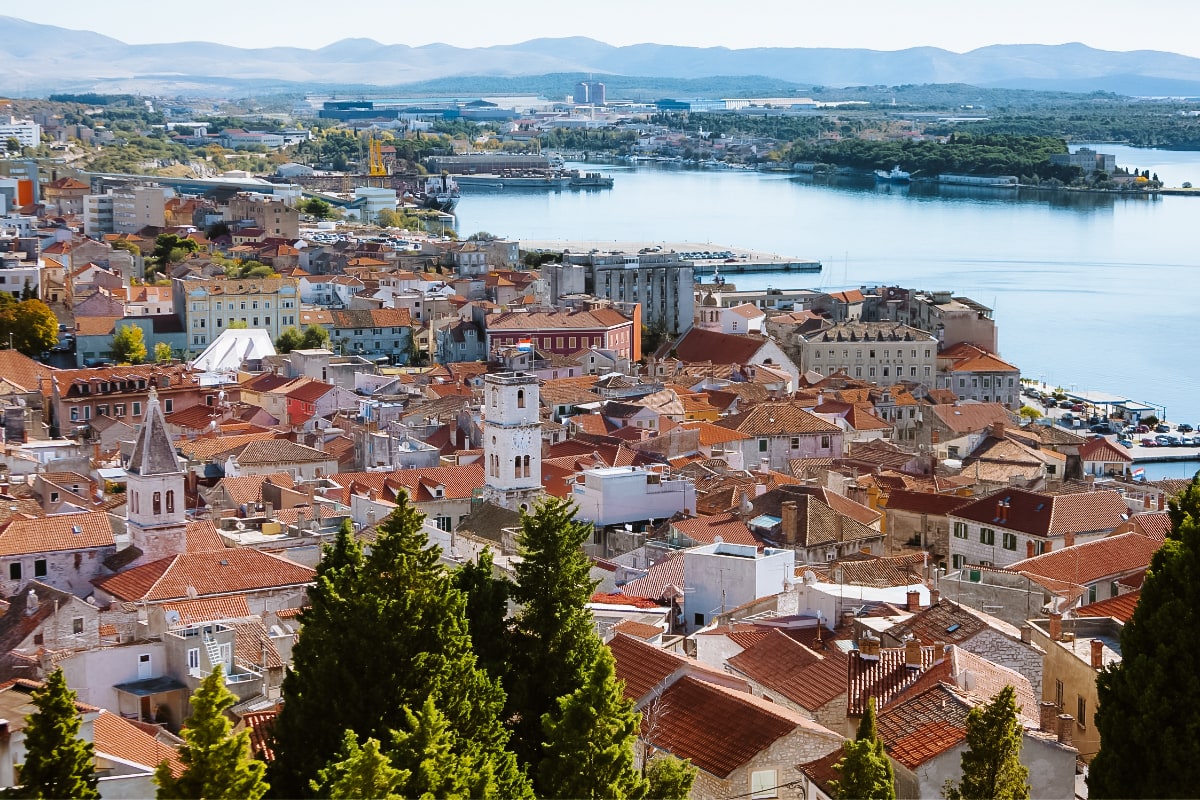
Stroll through the narrow stone streets and enjoy a coffee in the historic squares of the city that was the first in the world to be lit by electric light.
Sibenik is famous for its four fortresses – St. Michael’s, St. Ivan’s, Šubićevac (Barone) and St. Nikola, from which you can enjoy spectacular views of the city. You can buy a ticket separately or a combined ticket for all 4 forts at a discounted price.
Hotels in North Dalmatia 🏖️
8. Paklenica National Park
Nestled in the majestic Velebit Mountains on the Croatian coast, Paklenica National Park is a true paradise for nature lovers, hikers and climbers. The park is famous for its impressive Velika and Mala Paklenica canyons, which stretch all the way to the Adriatic Sea.
Thanks to its biodiversity and geological diversity, Paklenica is part of the UNESCO World Biosphere Reserve.
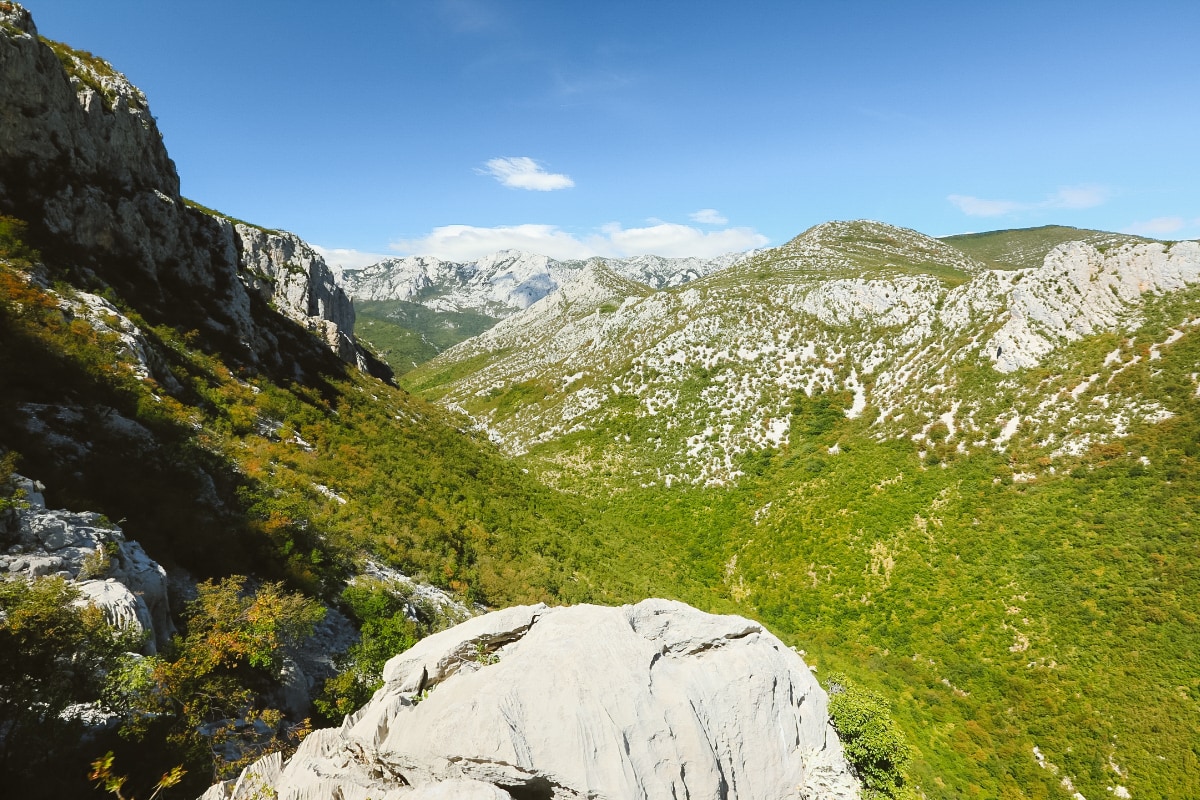
The most popular part of the park is Velika Paklenica, a canyon only a few metres wide in some places. Here you can follow one of the hiking trails that lead to mountain huts and lookouts with spectacular views of the surrounding countryside.
For one of the best views, don’t miss the rocky outlook of Anića kuk, which offers a panoramic view of the surrounding area. The ascent takes about 1.5-2 hours and leads over boulders towards the end of the trail.
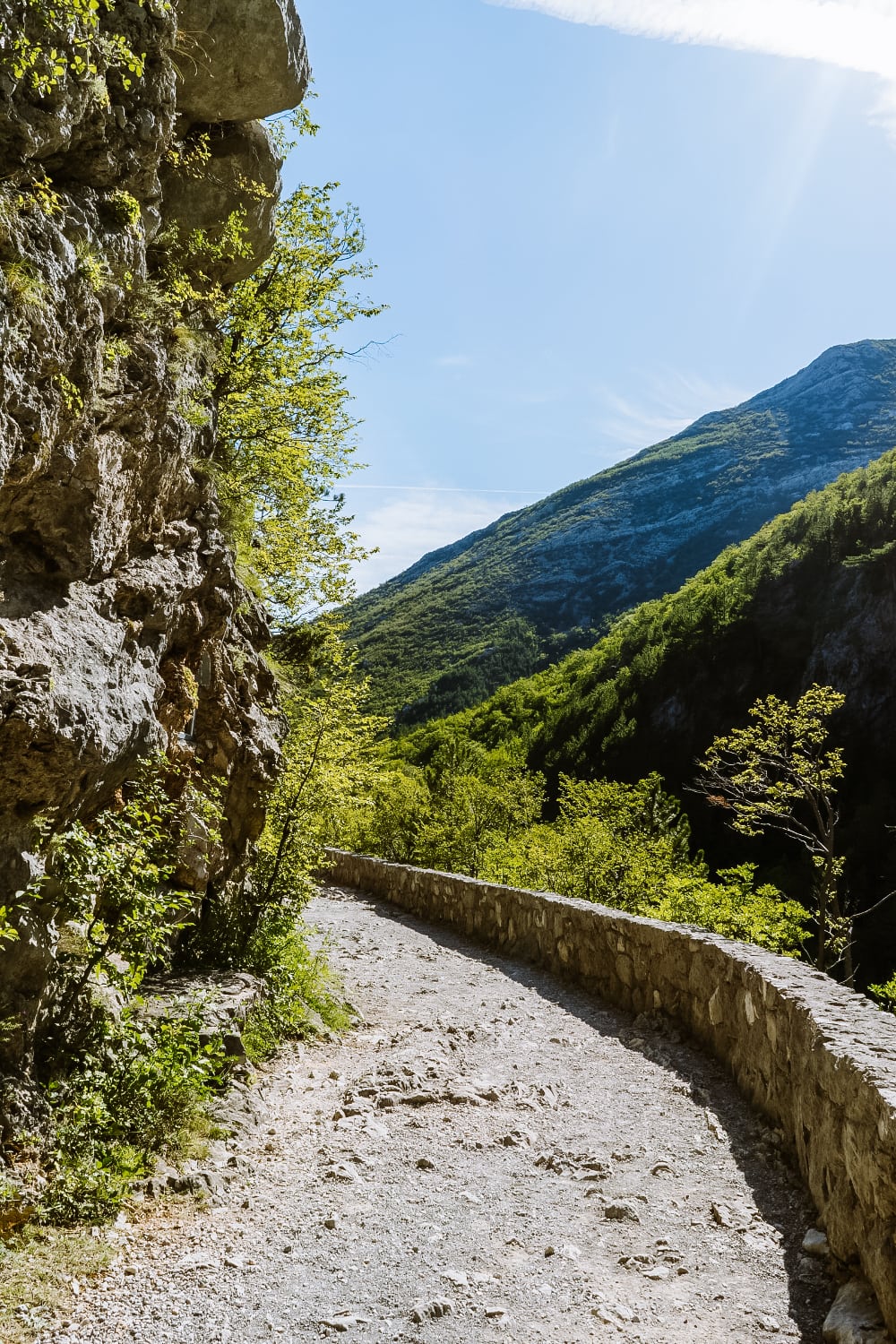
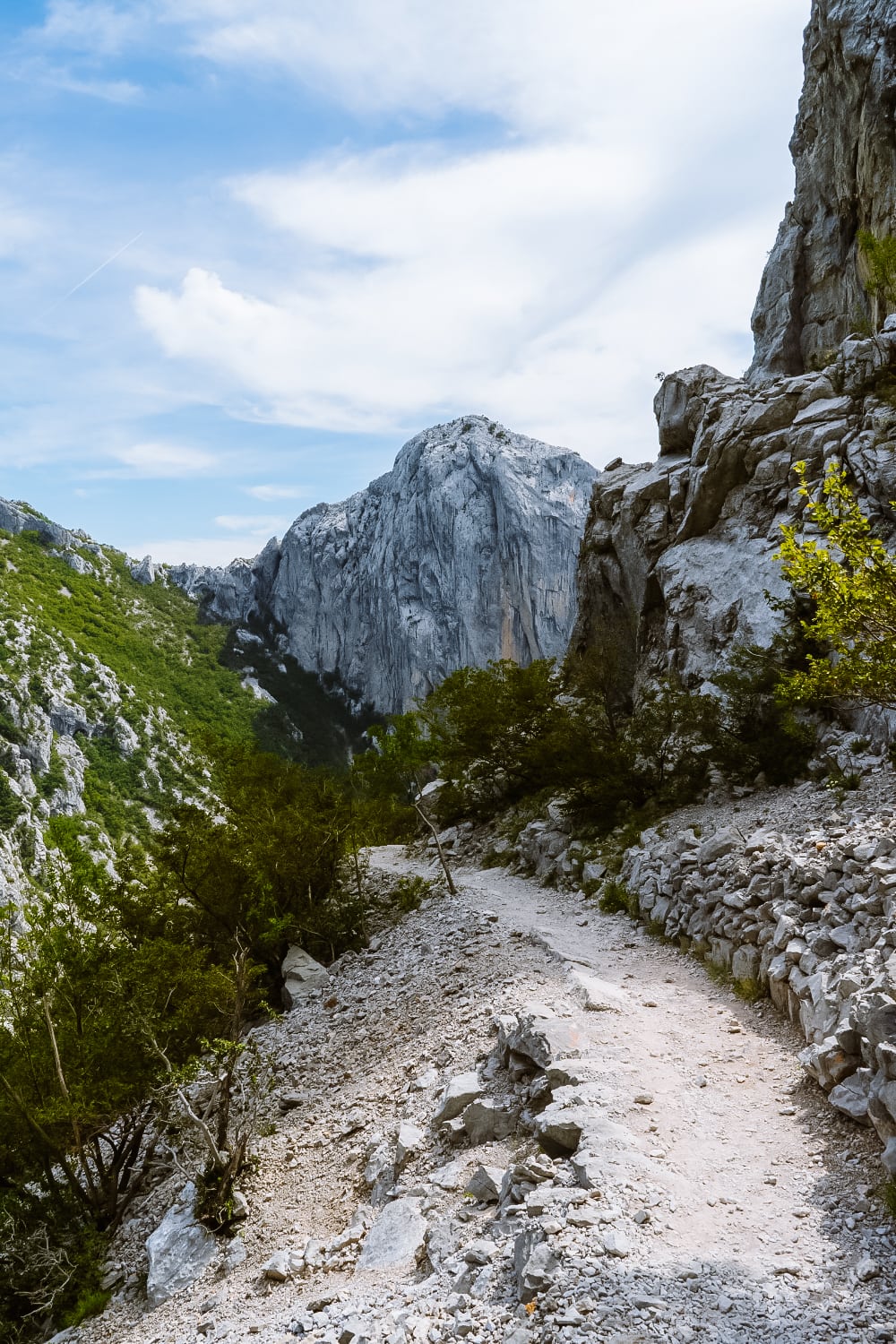
Practical information for visiting NP Paklenica
- Preparation: remember to wear comfortable shoes and take plenty of water, especially if you are planning longer hikes. Weather can change quickly in the mountains, so it’s a good idea to bring an extra layer and a raincoat.
- Entry fees and rules: There is an entrance fee to enter the park, which contributes to the protection and maintenance of the park. It is important to follow the park rules, not to litter and not to walk off the marked trails. Here you can find more information before visiting Paklenica NP.
- Best time to visit: The park is open all year round, but the best time to visit is spring and autumn, when it’s not too hot and less crowded.
9. Motovun
Motovun, a picturesque medieval town set high on a hilltop in the heart of Istria, is surrounded by massive defensive walls. Stroll through the narrow streets lined with Gothic and Renaissance buildings and enjoy the magnificent views of the surrounding vineyards and olive groves. The town is small and can easily be walked in 1-2 hours.
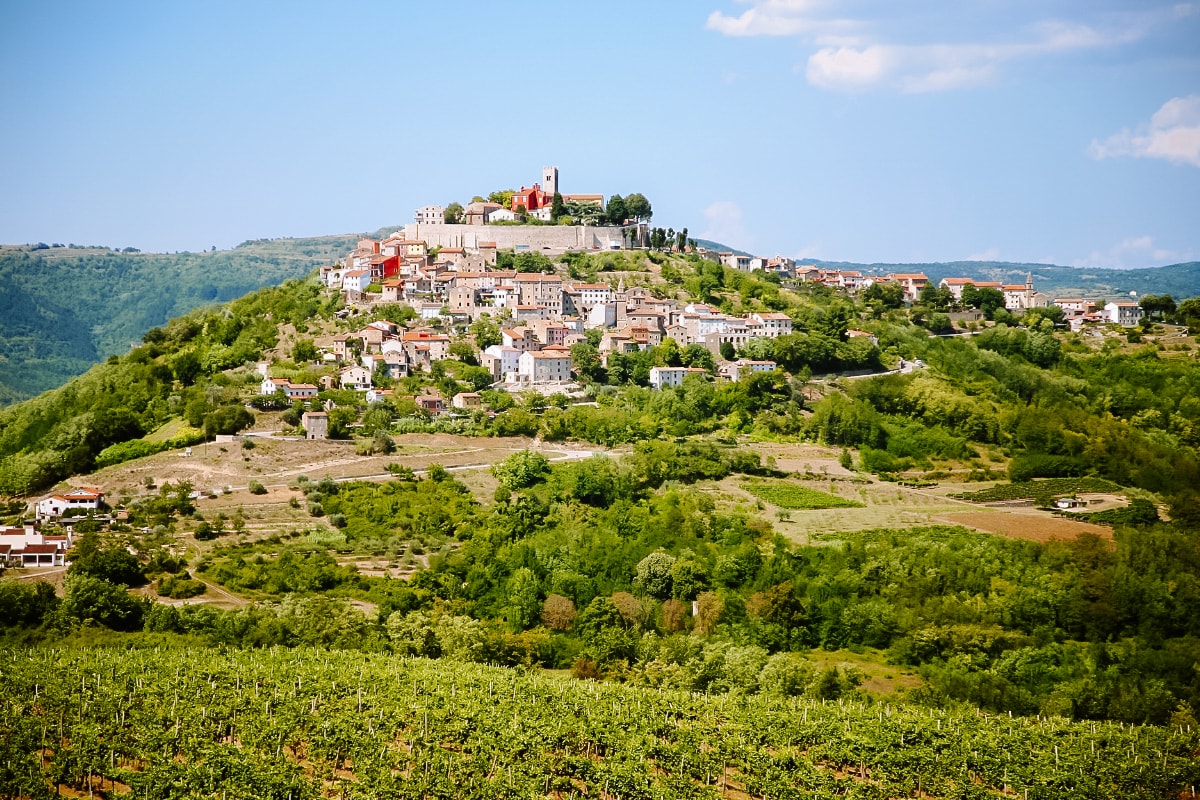
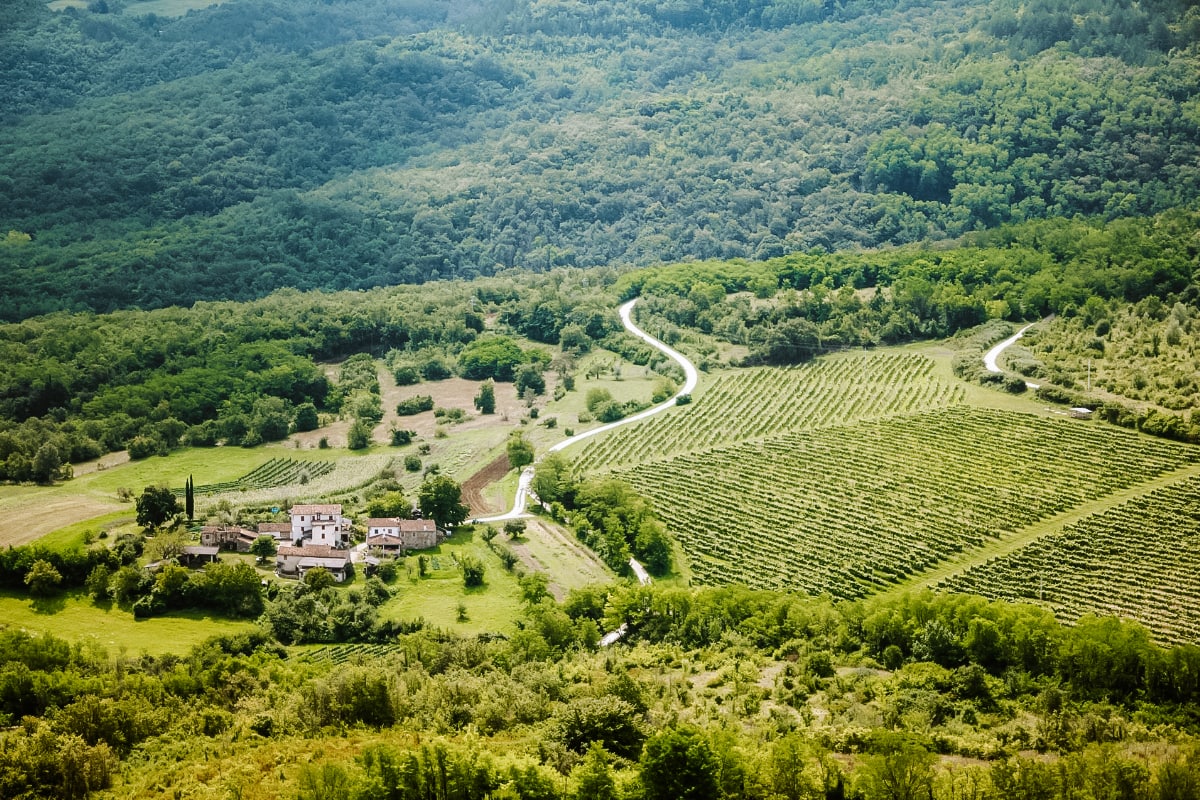
Motovun is famous for its fresh truffles, which are harvested in the surrounding forests. Don’t forget to try the local Istrian wine and olive oil, which is considered one of the best in Croatia.
The old town is situated on top of a hill, which is not accessible by car. You must park in the paid parking lot just below the summit.

10. Rovinj
Rovinj is the most romantic town in Croatia – it stands like a living postcard, towering over the blue waters of the Adriatic Sea and is rightfully one of the most beautiful places in Croatia.
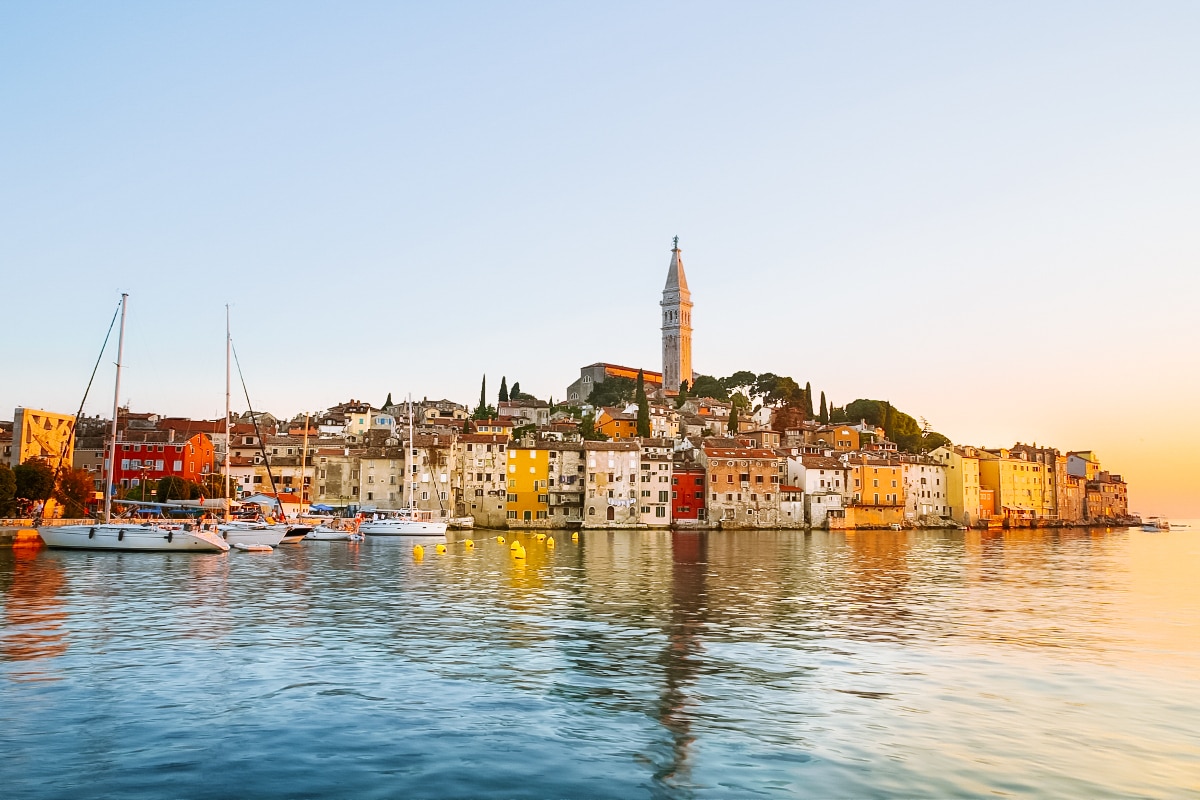
This former fishing town, with its narrow cobbled streets, colourful stone houses and the dominant church of St Euphemia on the hilltop, exudes a unique atmosphere that attracts visitors from all over the world.
Take a stroll around the harbour with its waterfront cafes, which is the perfect place for an afternoon stroll and an evening sitting watching the sunset.
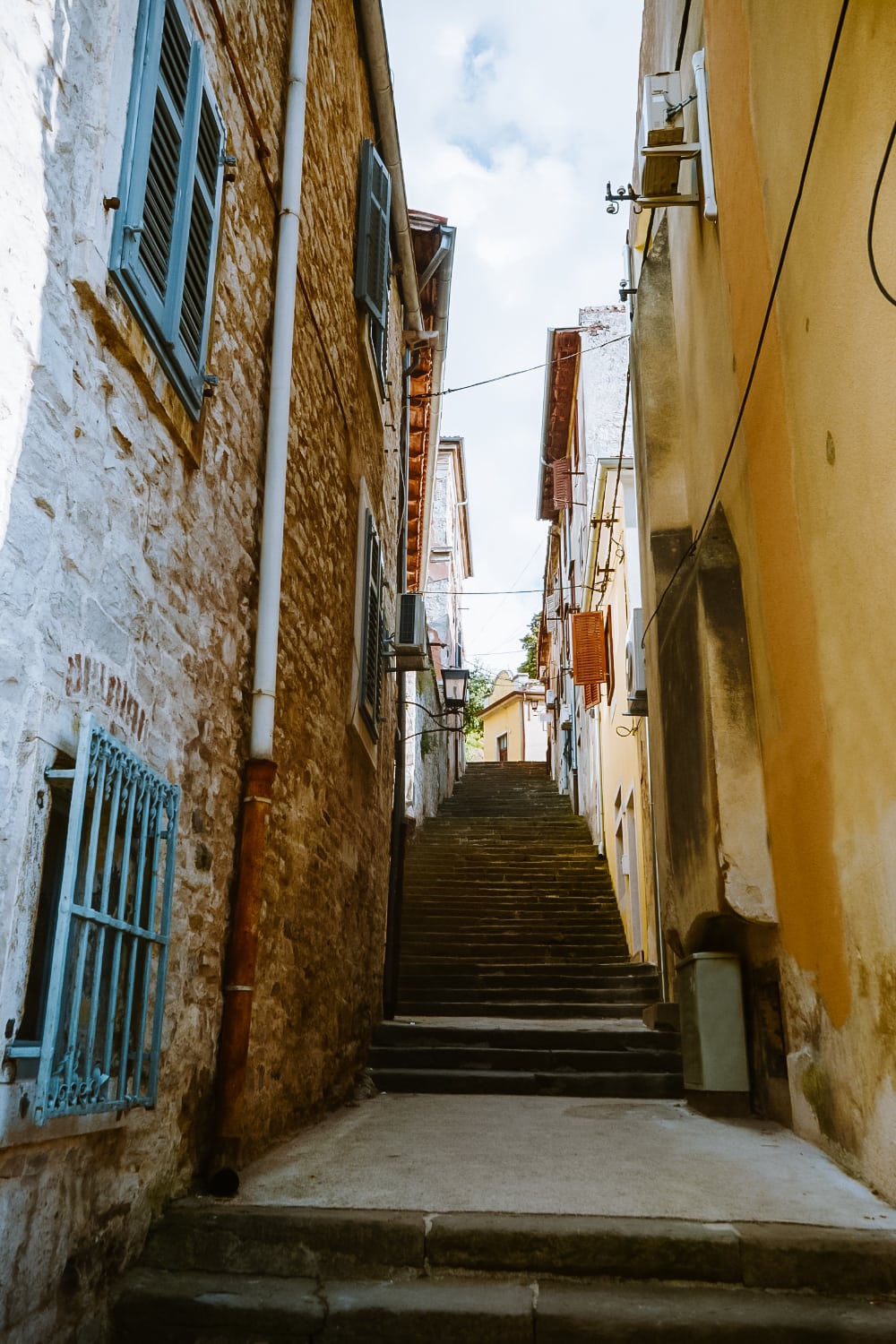

11. Hvar
If you are looking for a place where you can enjoy beautiful nature, crystal clear sea, rich history and delicious food, the island of Hvar must be on your list.
Explore the old town of Hvar with its narrow stone streets, lively squares and the historic fortress Fortica (Španjola), which offers the best view of the town.

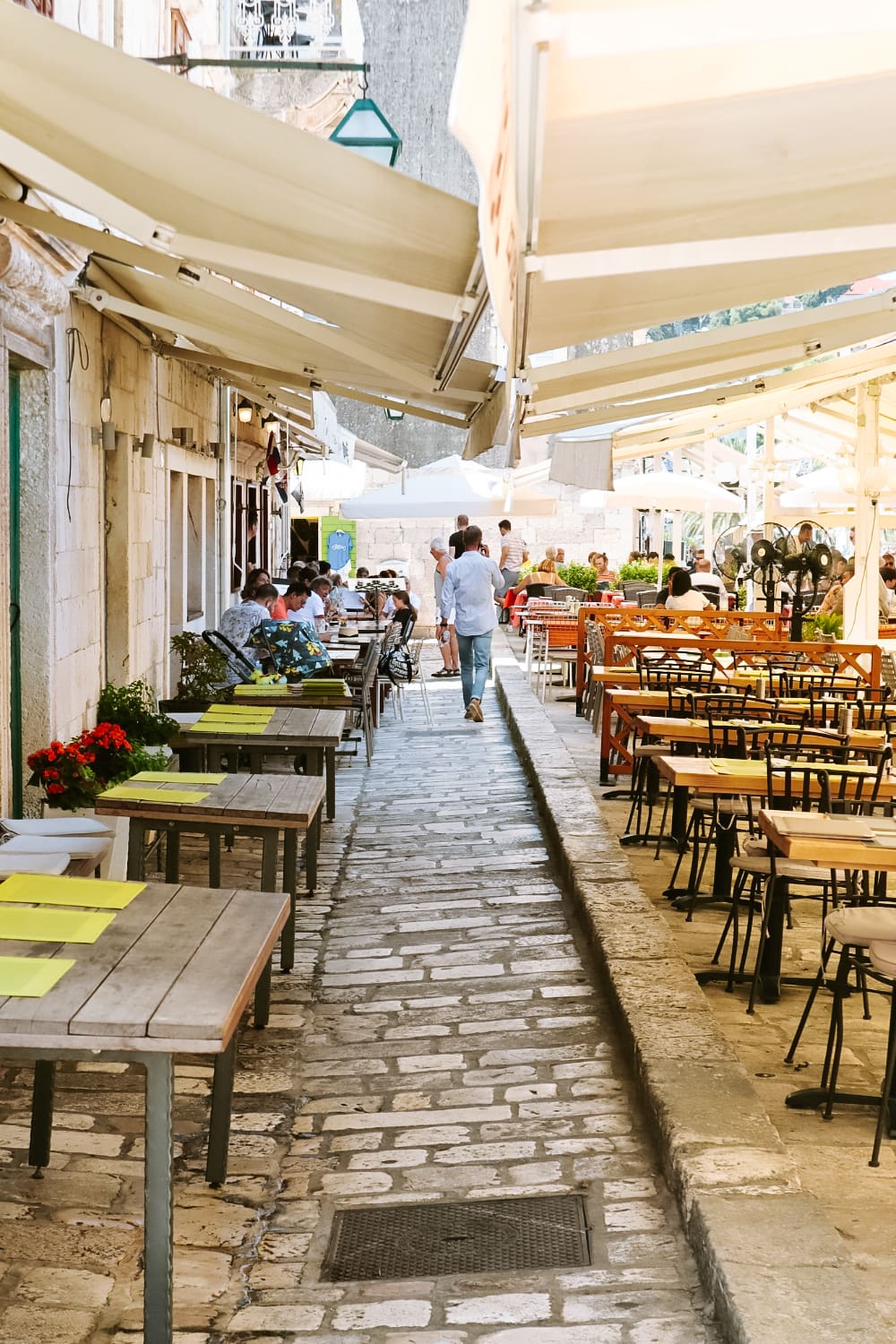
For a quieter atmosphere, visit Stari Grad, the second largest town on the island. Right in its centre is the Petra Hektorovic Fortress, one of the most beautiful buildings on Hvar.
The island also offers a number of beautiful beaches, such as Pokonji Dol or Dubovica, where you can enjoy swimming in crystal clear water with spectacular views of the surroundings.
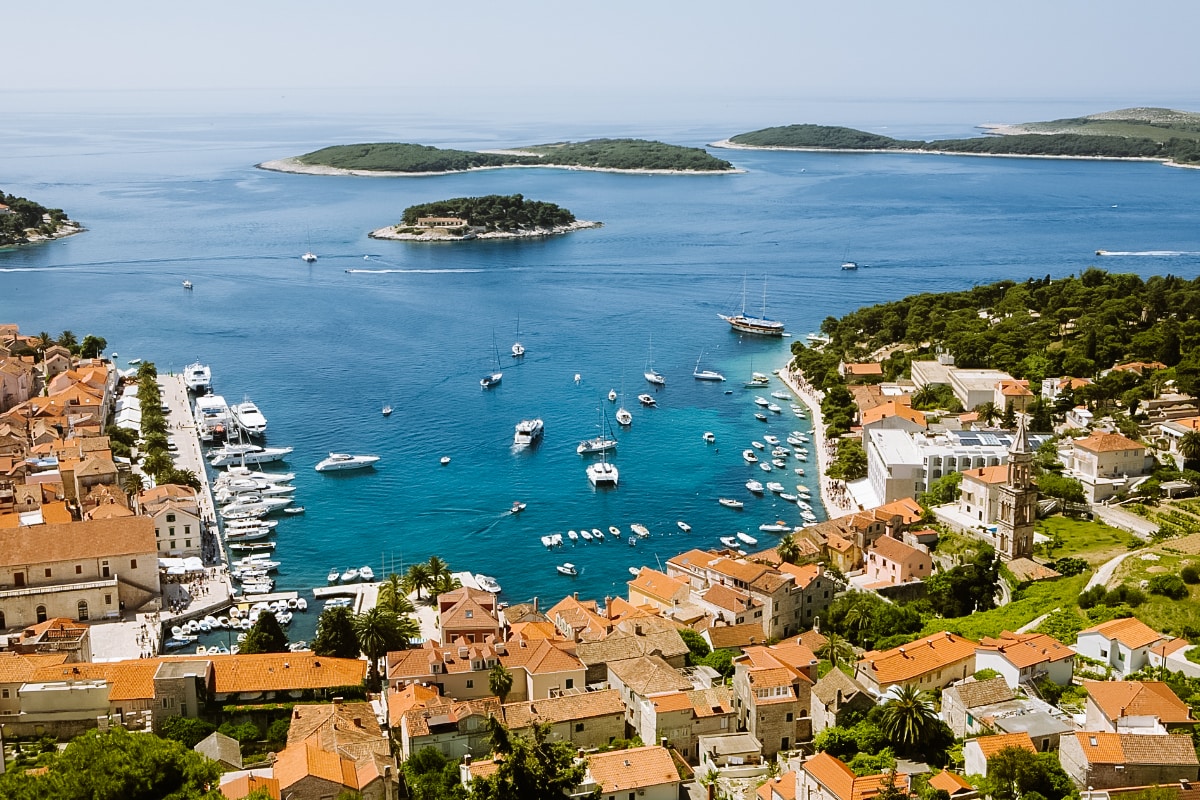
Hotels island Hvar 🏖️
Near Hvar lies a group of islands known as the Pakleni Islands, which offer beautiful beaches and bays for swimming and snorkelling. From Hvar you can take a variety of excursions – to the Pakleni Islands or, for example, to the Blue Cave on the island of Biševo.
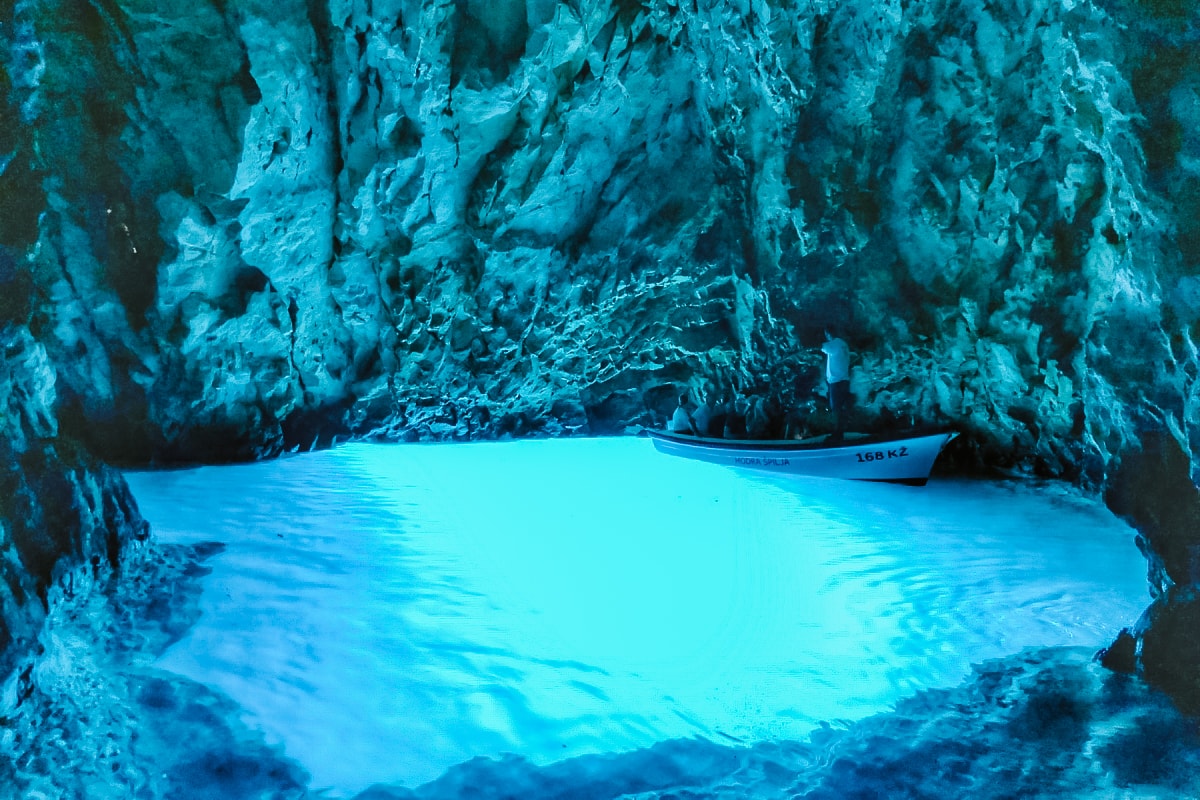
12. Mljet National Park
Mljet National Park, located on the island of the same name in the south of Dalmatia in Croatia, is an oasis of endless peace and greenery.
The park is home to two salt lakes, the Great and the Little Lake, which are connected to the sea by a narrow channel. In the centre of the Great Lake is the islet of St. Mary with the Benedictine monastery from the 12th century.

You can walk for hours on the local trails and enjoy the surrounding greenery and untouched nature. It’s like a balm for the soul.
Practical tips for visiting Mljet National Park
- How to get: If you are only planning a trip to Mljet, take the Split-Dubrovnik catamaran line, which stops at Brac, Makarska, Korcula, Mljet and ends in Dubrovnik. Are you driving? Ferries leave from the village of Prapratno on the Peljesac peninsula to the village of Sobra on the island of Mljet.
- Entrance fee: A fee is charged to enter the national park, which contributes to the protection and maintenance of the park. Here is a link to the official Mljet NP website where you can find more information.
- Nature and Conservation: When visiting the park, it is important to stick to the marked paths and not to leave litter behind.
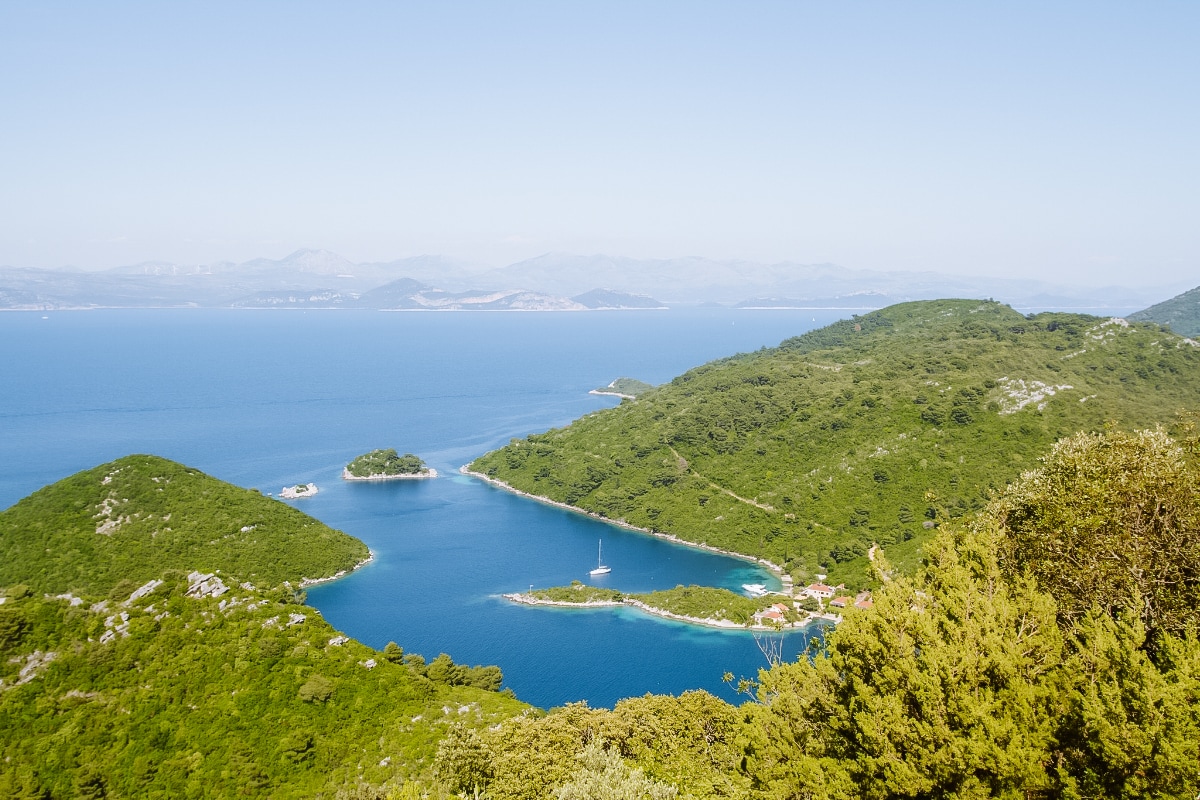
13. Pasjača beach
Pasjača beach, a hidden gem near Dubrovnik, is one of the most beautiful beaches in Croatia (and there’s a lot of competition).
An isolated pebble beach surrounded by steep rocky cliffs and crystal clear azure sea. It’s a completely natural place with a bit of a circuitous route, but it’s worth it.
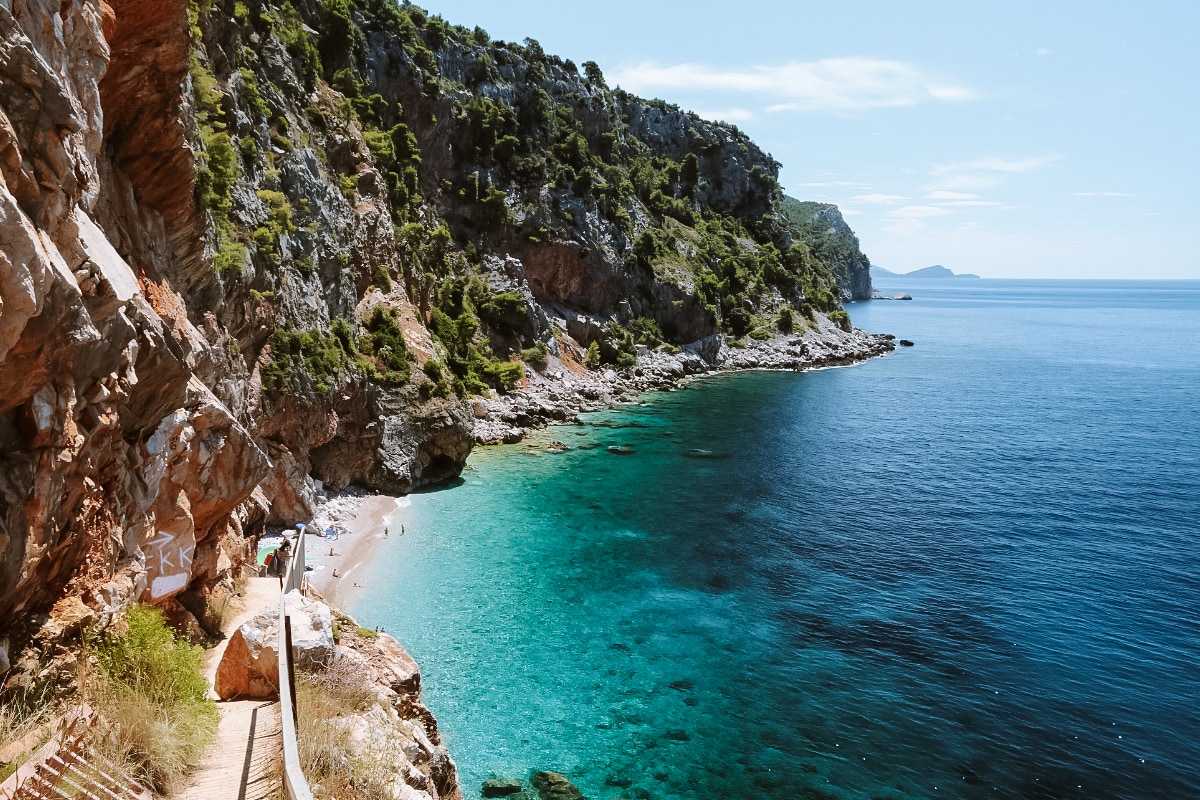
How to get to Pasjača beach
Pasjača beach is located near the village of Popovići, about 30 kilometres southeast of Dubrovnik. The easiest way to get to the beach is by car. Upon arrival in the village, you will find a small parking lot, from where steep steps carved directly into the rock lead to the beach.
There are no refreshments or toilets on the beach. It has become quite popular in recent years – the best time to visit is outside of July and August or, conversely, in the morning or later afternoon.
14. Korčula
The island of Korčula is one of the greenest islands in Croatia, known for its rich history, beautiful beaches and excellent wine. The whole island is covered with pine forests, vineyards and olive groves.
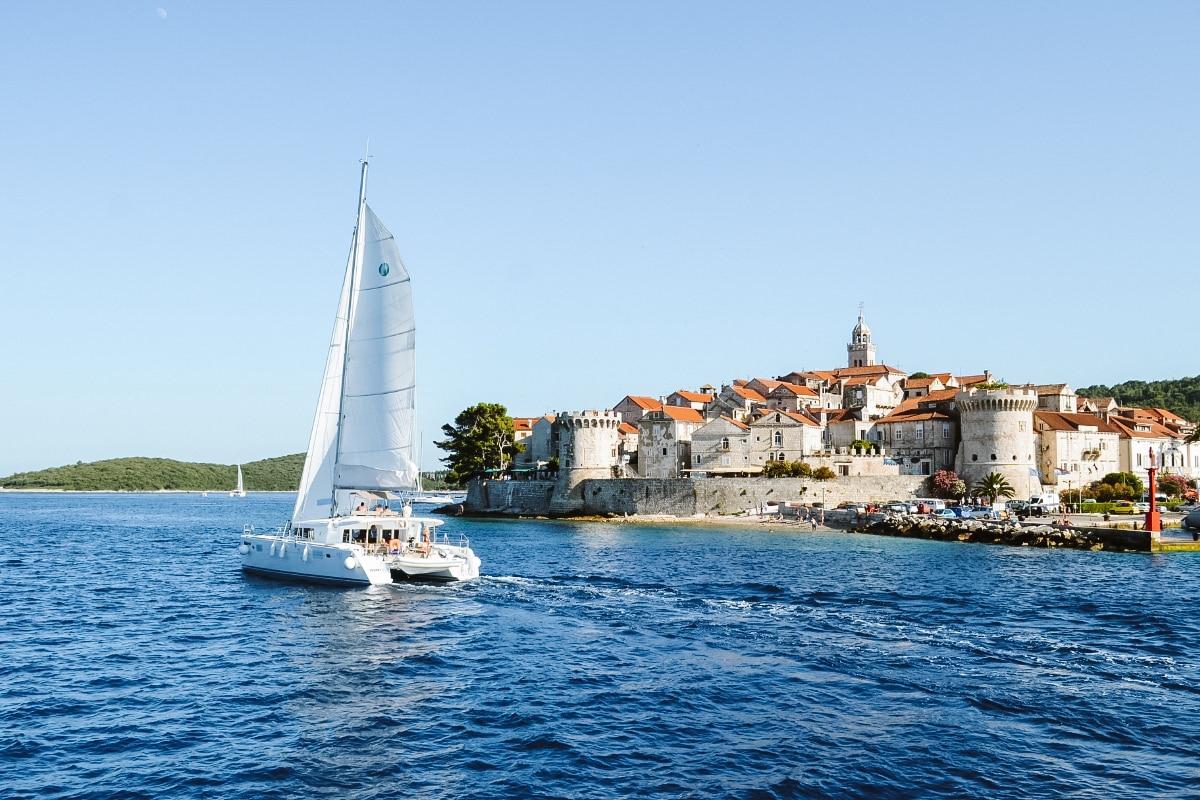
The heart of the island is the old town of Korčula, with its narrow, cobbled, herringbone-shaped streets – this layout was deliberately chosen to protect the inhabitants from strong winds. It was in Korčula that the famous traveller and sailor Marco Polo was born.
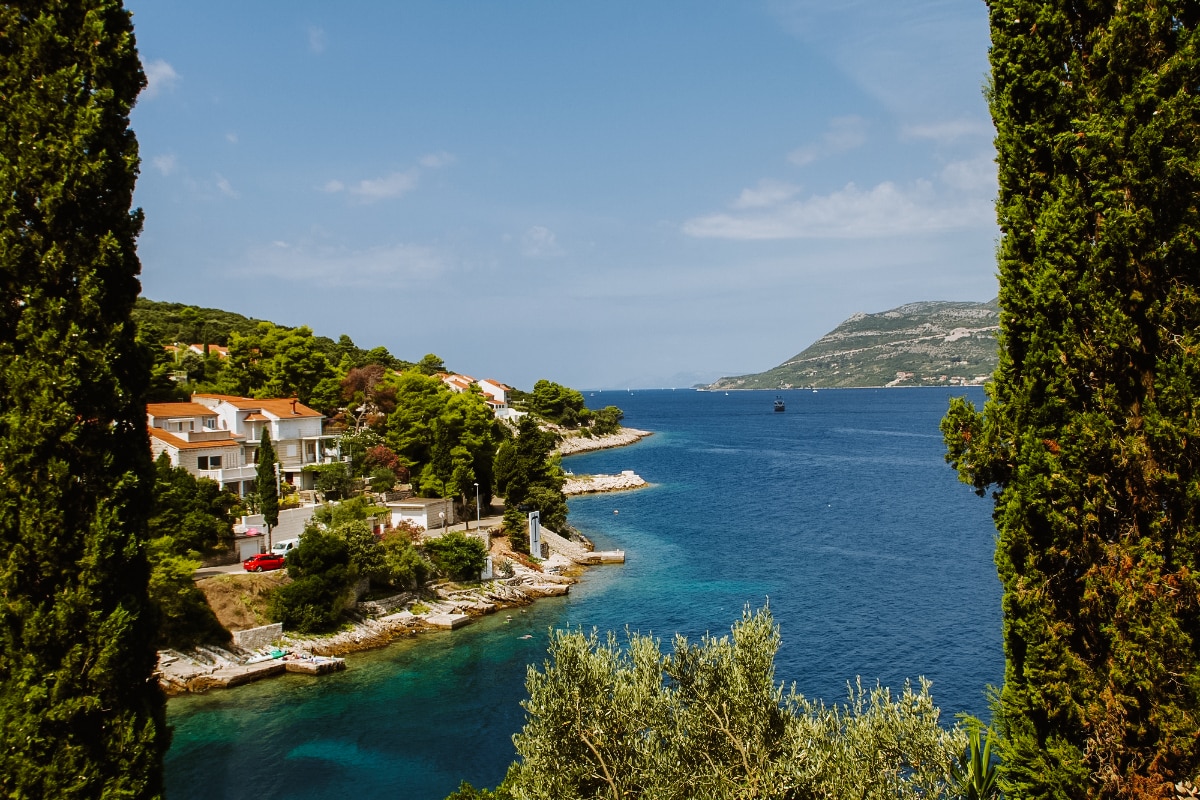
The island has some of the most beautiful beaches in Croatia, including Pupnatska Luka and Zitna in the south of the island.
☞ Find out more about Korcula in our article about the most beautiful Croatian islands.
15. Telašćica Nature Park
Telašćica Nature Park, located at the southern end of the island of Dugi Otok in Croatia, is one of the most interesting nature reserves in the Adriatic Sea. This park is famous for its white cliffs, which rise to a height of 161 metres and offer breathtaking views of the open sea.
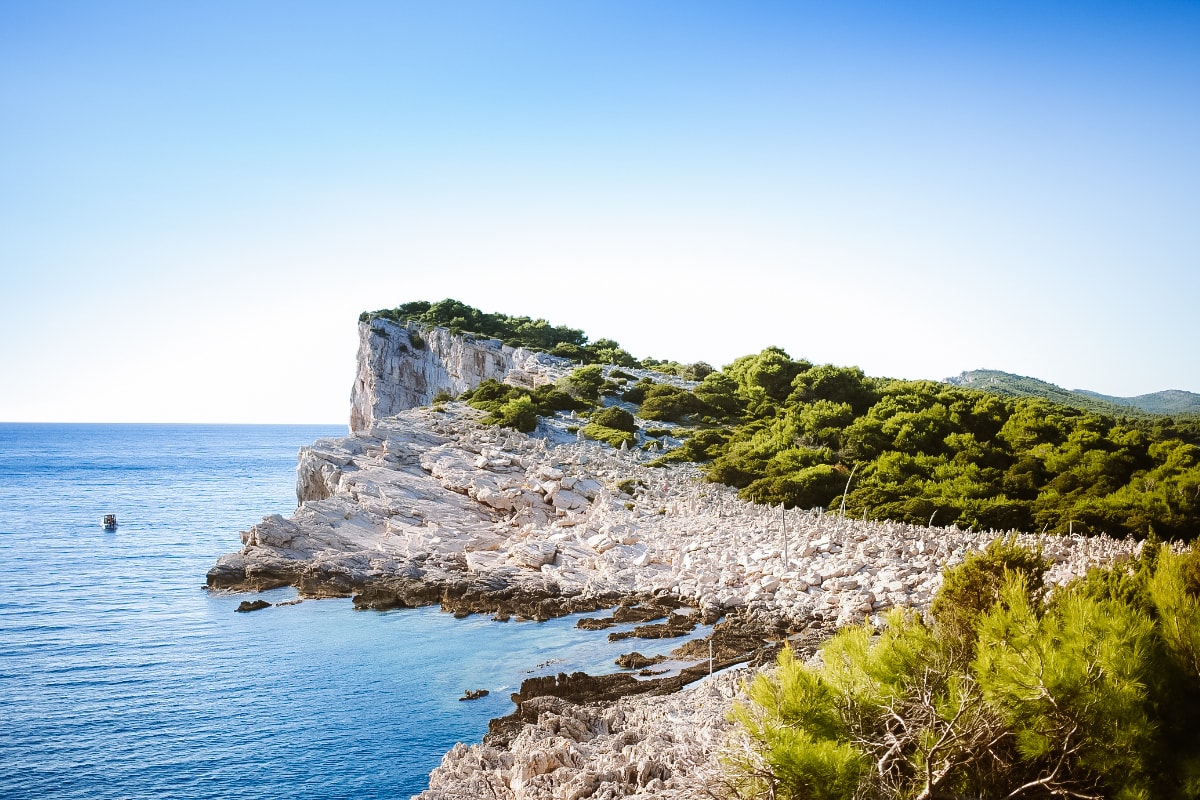
In the middle of the park lies the salt lake Mir, which is surrounded by dense pine forests. This is where most of the tourists congregate, so if you’re looking for more peace and quiet, move a little further away from the lake.
If you head towards the coast, there is a trail that leads past the beach and offers views of the azure sea and majestic cliffs. And ironically, you’ll encounter far fewer people than at Lake Mir.
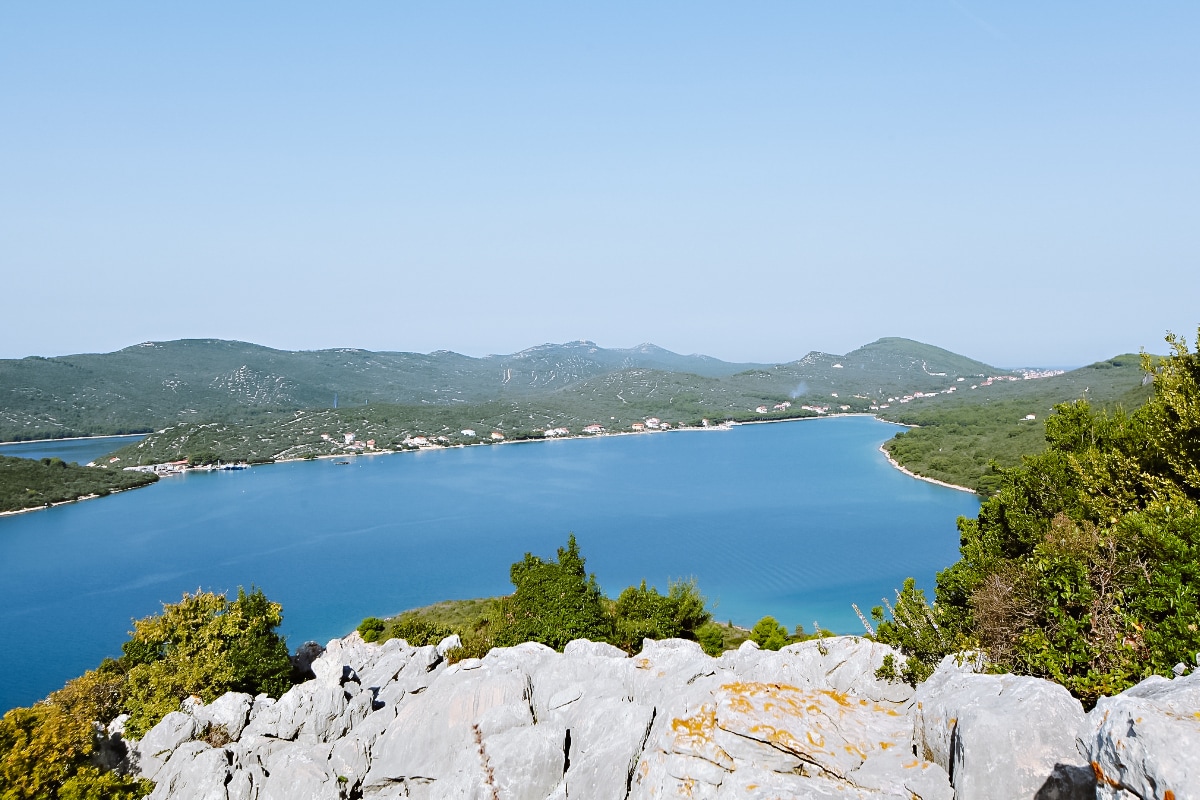
16. Rastoke village
Rastoke is a picturesque village known as “Little Plitvice”, located at the confluence of the rivers Slunjcica and Korana in Croatia. At the heart of Rastoke are numerous small waterfalls and crystal clear lakes, the most famous of which are the Buk, Hrvoje and Vilina kosa waterfalls.
It is like a living museum with historic mills, some of which have been restored and are still in operation. The entire area can be explored along one of the trails, from which you can enjoy beautiful views of the waterfalls and green landscape.
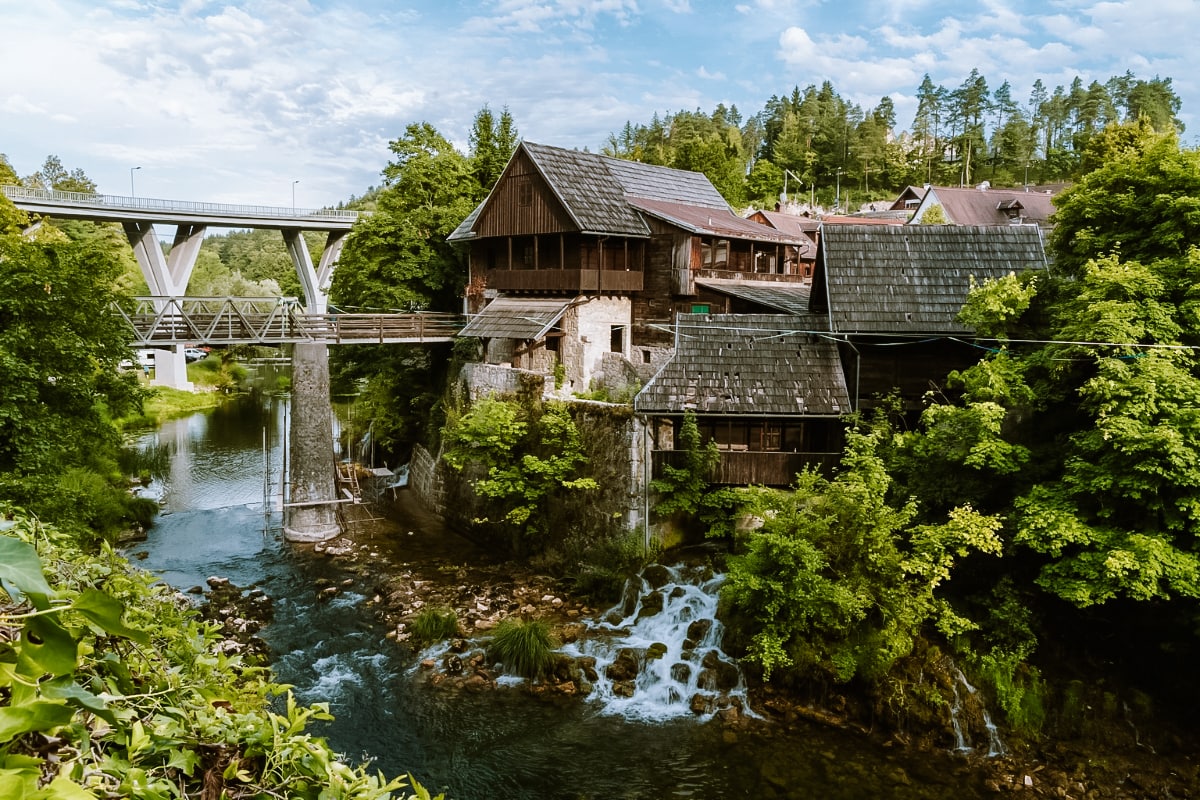
Rastoke is close to Plitvice Lakes National Park, so you can stop here on the way. The best time to visit is after the rainy season, i.e. in spring or autumn.
17. Peljesac peninsula
Head to the very south of Croatia, where the Peljesac peninsula is located. It is known for its beautiful nature, excellent wines and picturesque villages.
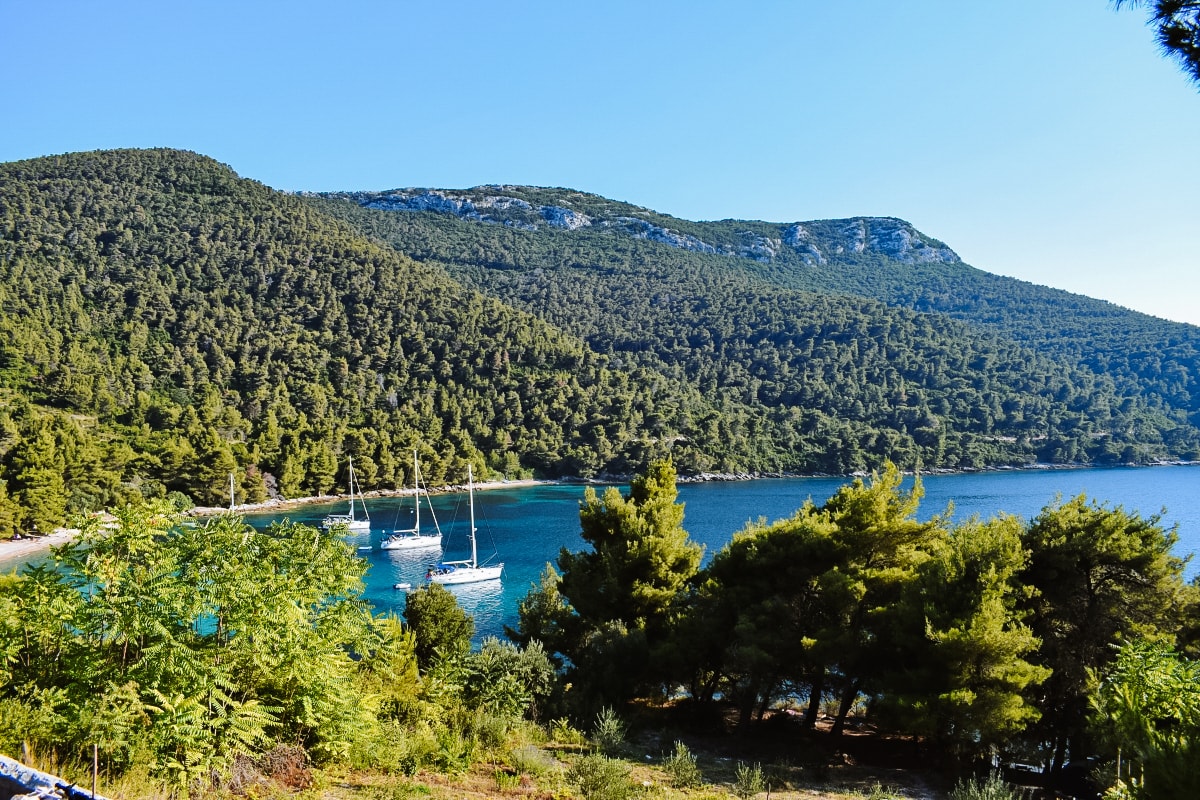
Don’t miss a stroll along the Ston walls. The Stone Walls are a 7 km long, perfectly preserved fortification, which is nicknamed the “European Chinese Wall”. After the Great Wall, it is the second longest surviving fortification in the world.
The Ston walls offer a great view of the salt pans that are typical of the Peljesac peninsula.
☞ Get inspired by the best sea destinations in Croatia.
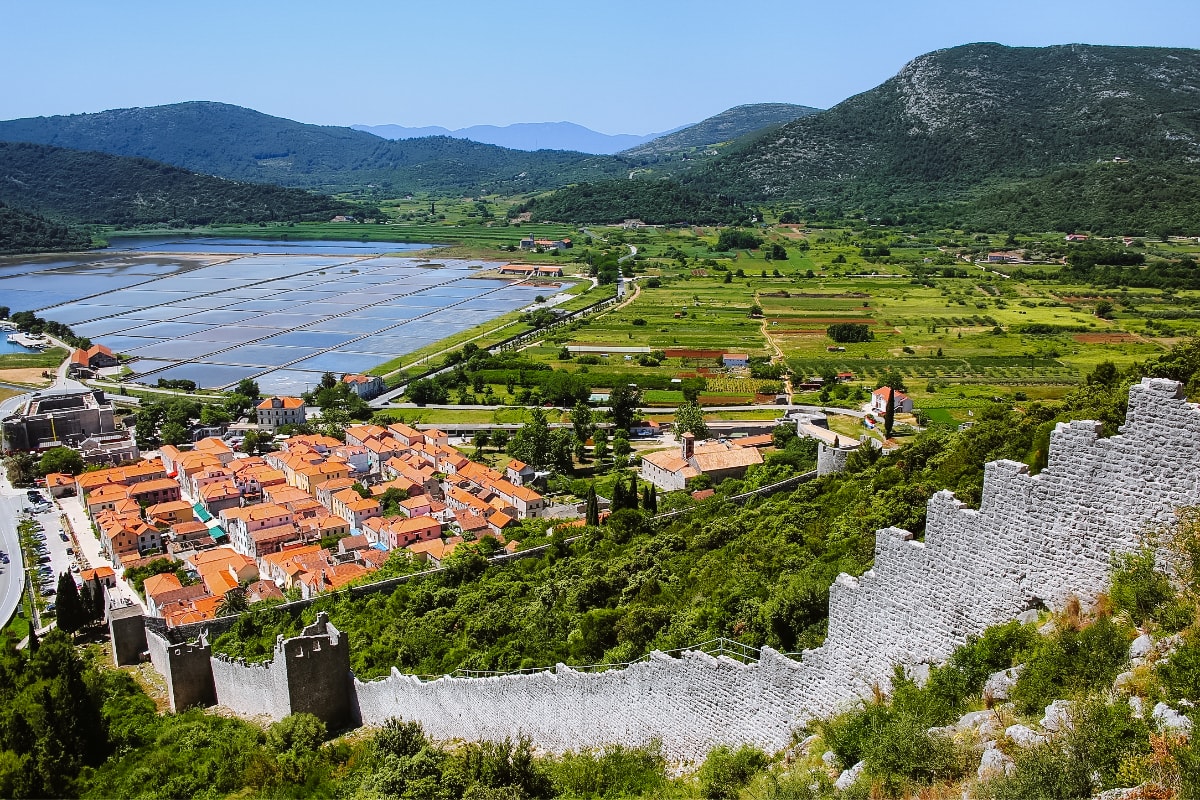
18. Kamenjak Nature Park
Kamenjak Nature Park is a picturesque protected peninsula on the southern tip of Istria in Croatia. This place is a true natural paradise where you can enjoy beautiful beaches and crystal clear waters.
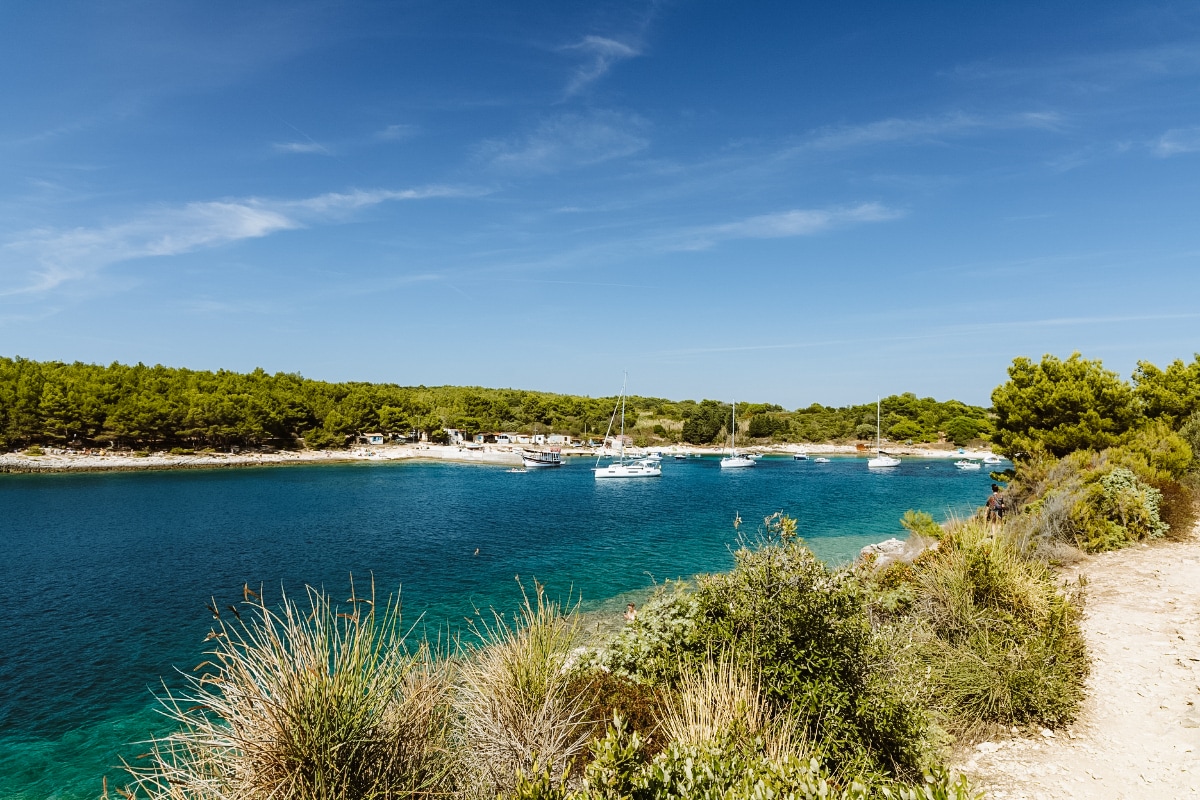
With more than 30 km of coastline, made up of rocky cliffs, hidden coves and pebble beaches, Kamenjak is the ideal place for nature lovers, divers, cyclists and anyone looking for peace and relaxation in unspoilt nature
Practical tips for visiting PP Kamenjak
- How to get: Kamenjak is easily accessible by car, and there are several parking lots scattered throughout the reserve. In high season, there is a fee for entering the reservation by car.
- Cycling and hiking: The park is interwoven with trails that lead through a diverse landscape and provide views of the sea.
- Beach equipment: many of the beaches in Kamenjak are rocky or pebbly, so don’t forget a mat and suitable water shoes.
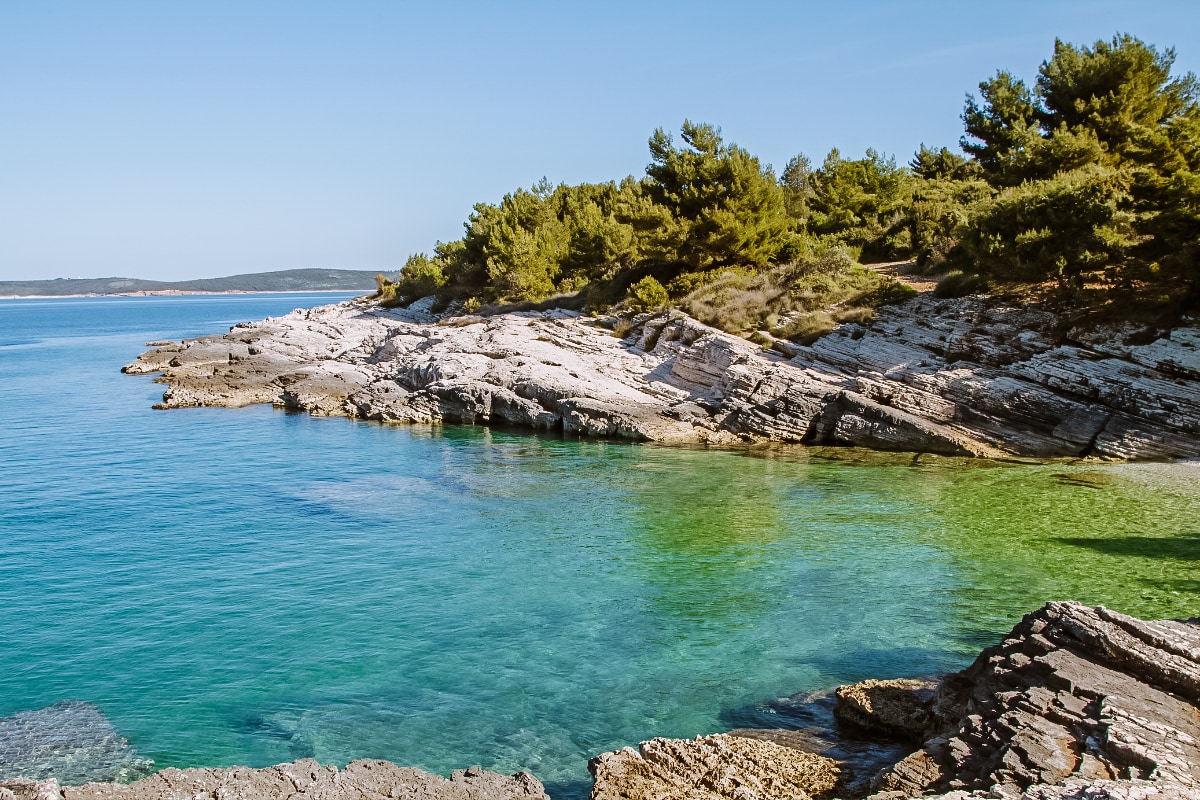
19. Zlatni Rat
Zlatni Rat is an iconic beach located in Bol on the island of Brac. And what makes it special? Zlatni Rat changes shape dynamically according to wind and currents.
In season it’s head to head, but if you come early in the morning or off season, you’ll only be here with a few others. Count also that the prices here are quite inflated.
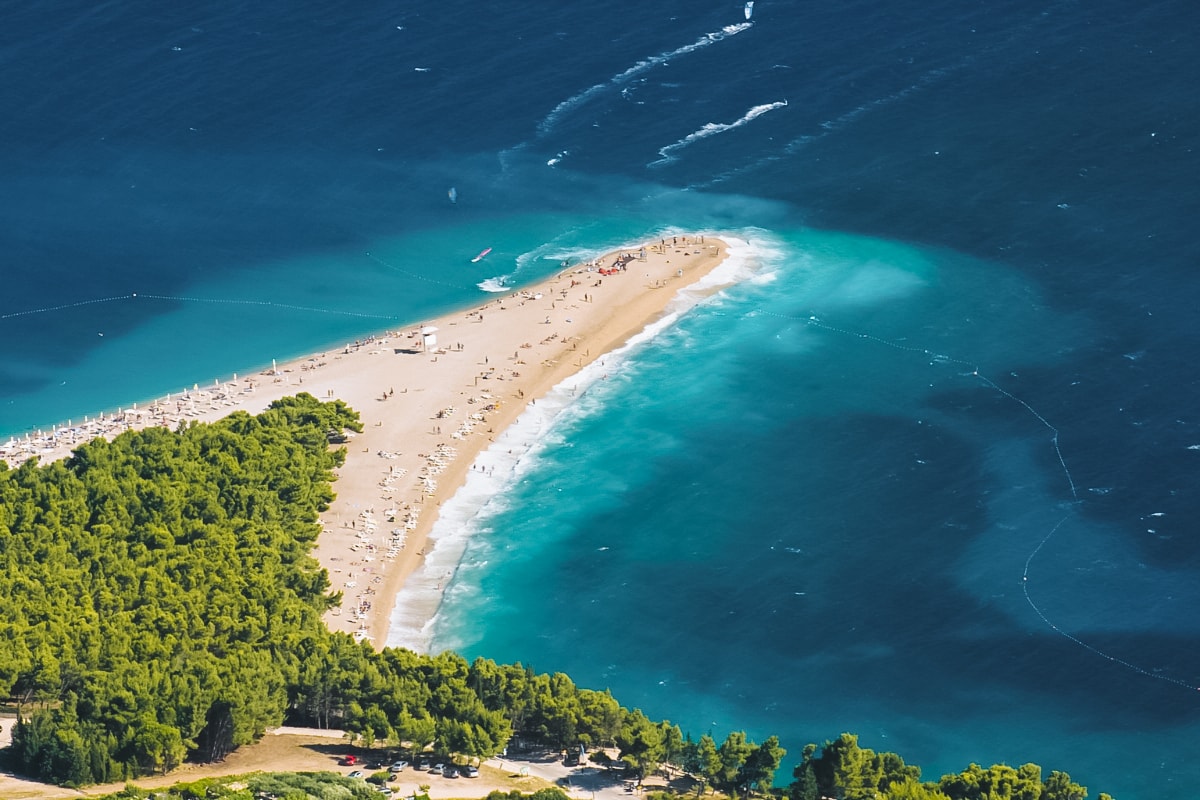
If you want to see the beach in all its glory and enjoy the view of the whole island, don’t miss the rocky viewpoint of Vidova Gora, the highest peak of the island of Brac. Plus, you can drive almost to the top and walk the rest of the way on a groomed path, making it easily accessible to all.
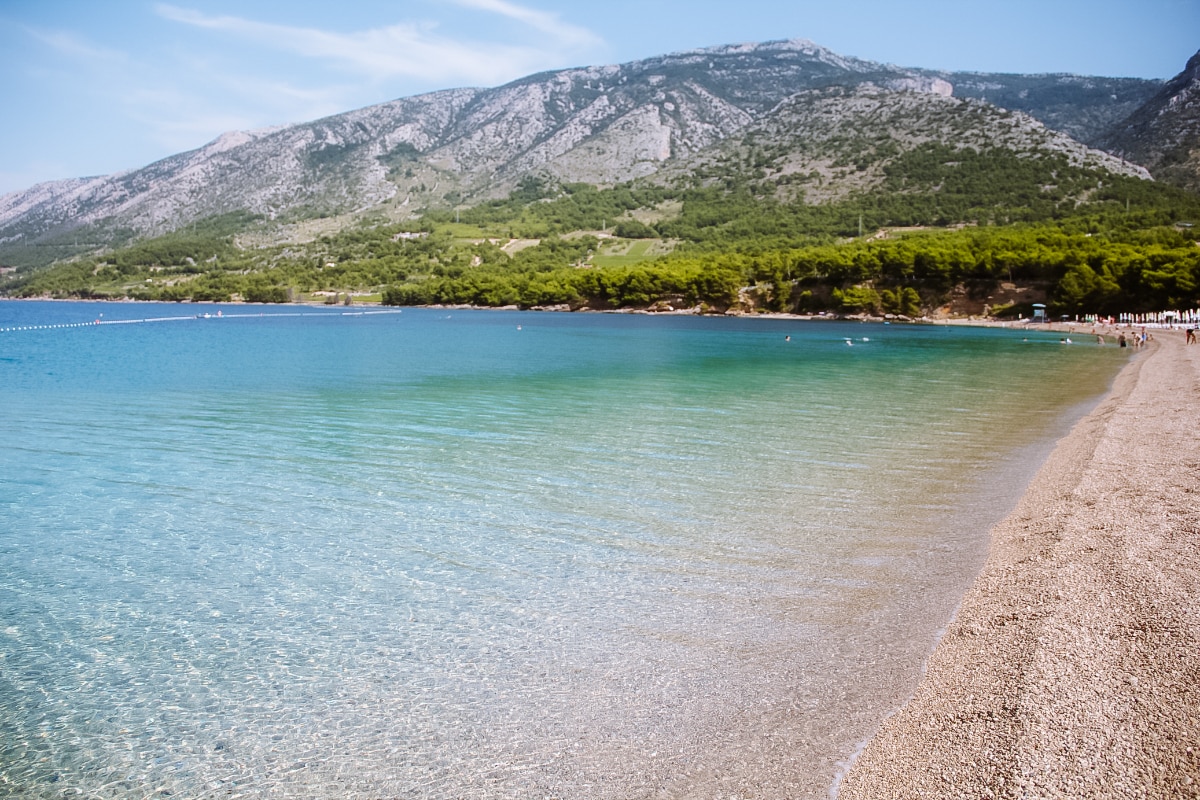
20. Risnjak National Park
Do you love beautiful and unspoilt nature? Then don’t miss Risnjak National Park in northwest Croatia, which is known for its dense forests, mountain streams, high biodiversity and bright rocks. If you want to take a break from the sea, Risnjak National Park is ideal.
Climb to the top of Risnjak, the highest peak in the park, and enjoy far-reaching views of the Alps. The Snježnik peak provides more breathtaking views.
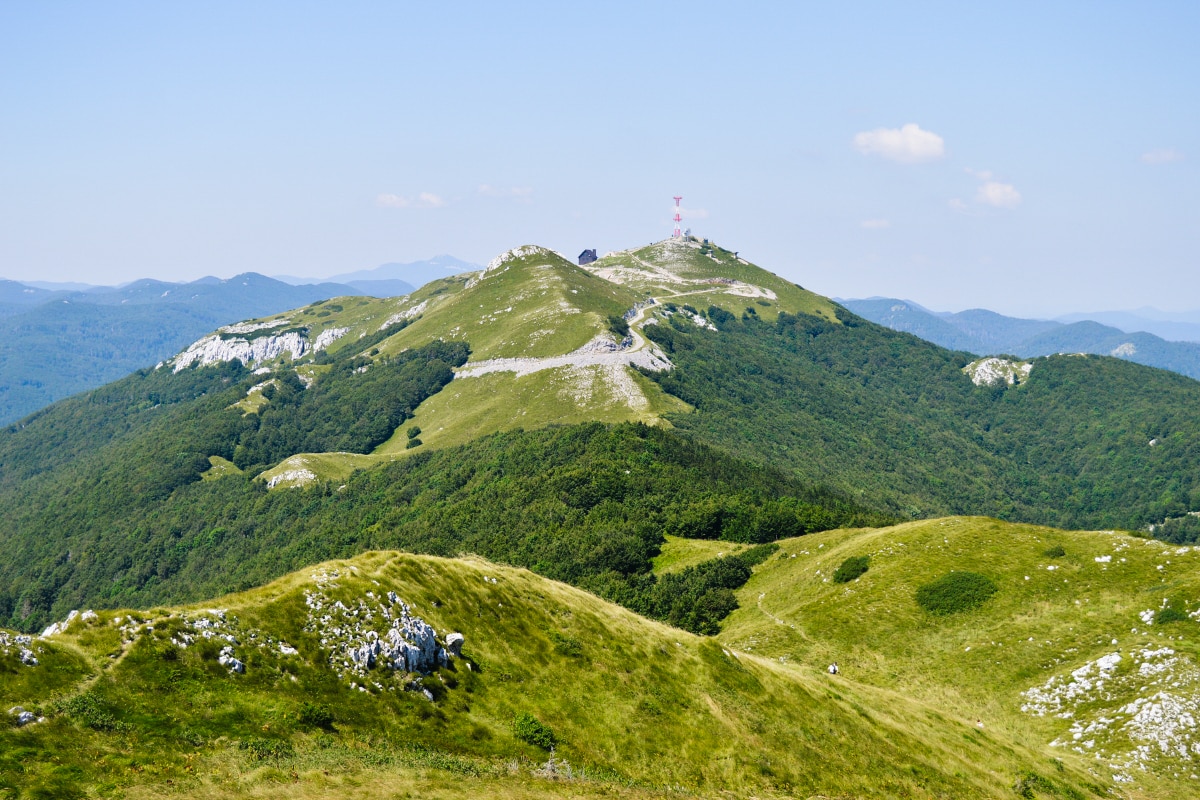
Practical tips for visiting Risnjak National Park
- How to get: Risnjak is easily accessible by car. Parking is available near the main entrances to the park.
- Entrance fee: there is an entrance fee to enter the national park – more information can be found on the official Risnjak NP website.
21. Pula – things to do in Croatia
Pula, the largest city in Istria, is famous for its historical monuments dating back to the Roman Empire. The dominant feature of the city is the impressive Roman amphitheatre, one of the best preserved in the world.
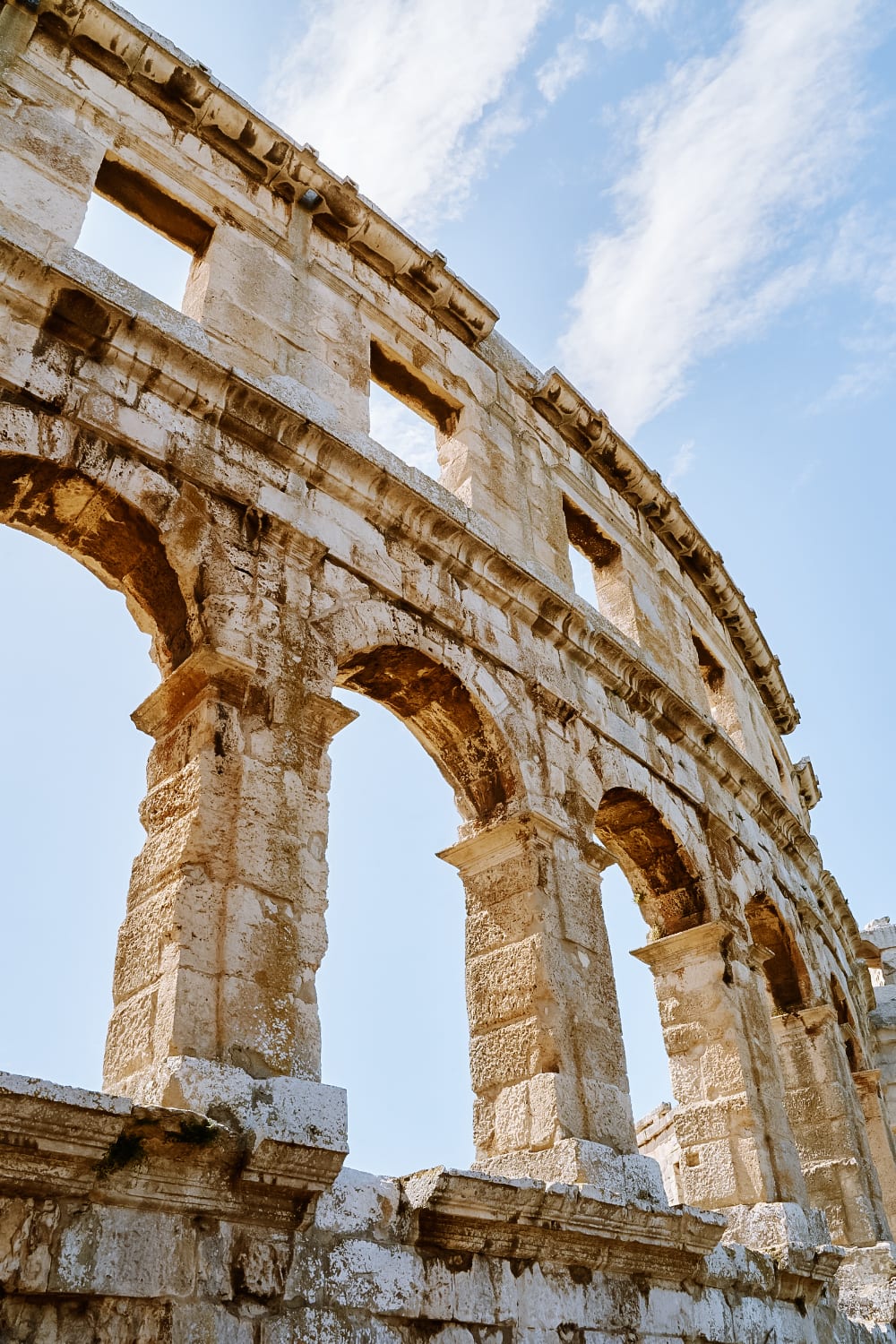
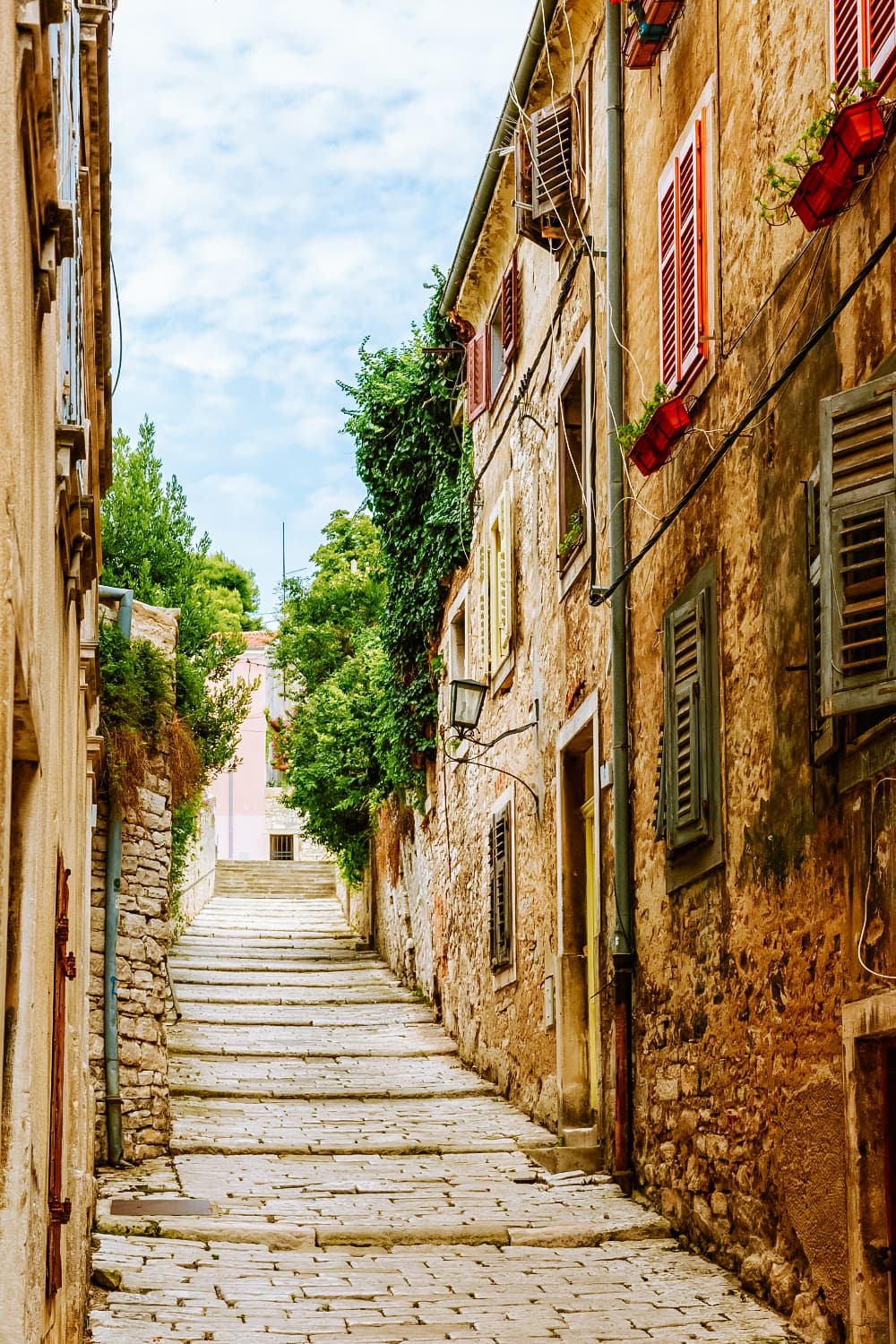
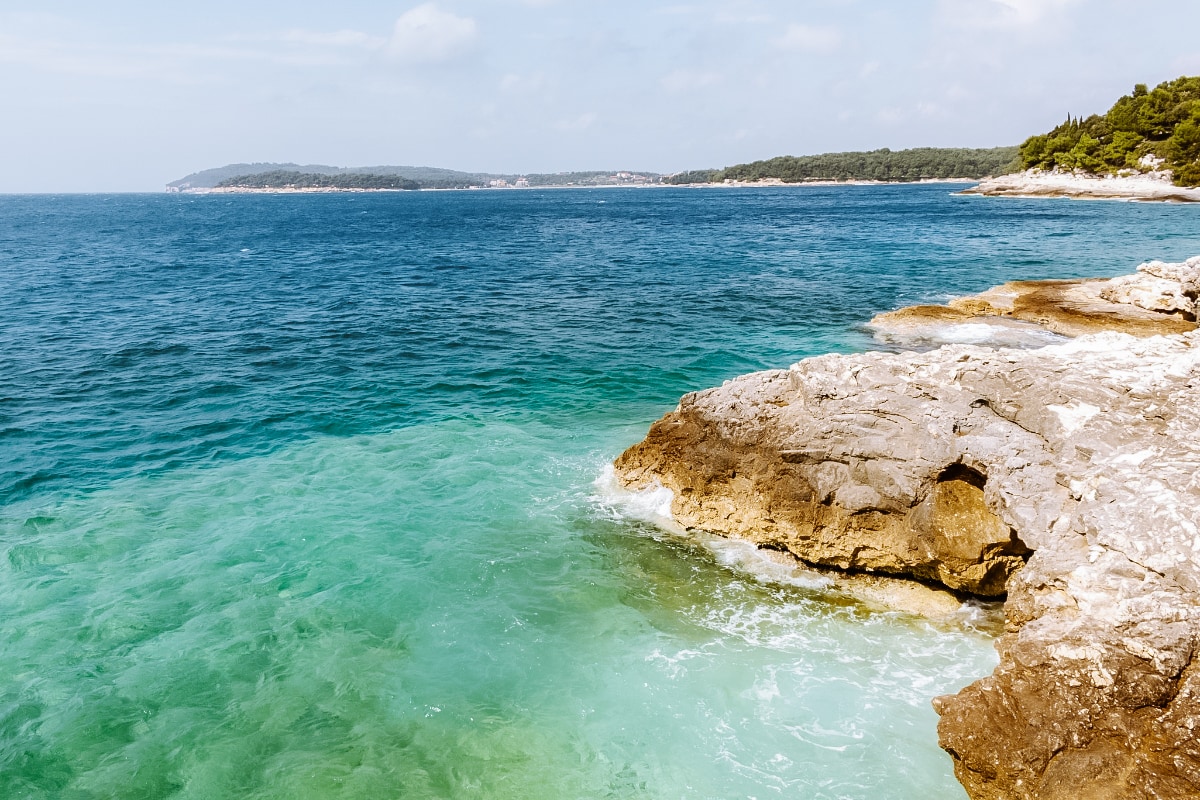
In addition to the amphitheatre, visit the Temple of Augustus, an ancient temple dedicated to Emperor Augustus, or the fortress of Kastel from the 17th century with views of the city.
But Pula is not just about sights. There are beautiful, rocky beaches and hidden coves where you can enjoy swimming and diving.
Hotels in Istria 😴
22. Baredine Cave
The Baredine Cave on the Istrian peninsula is a fascinating natural phenomenon that represents an underground kingdom full of stalactites, stalagmites and underground lakes. This stalactite cave is one of the first speleological sites in Croatia open to the public.
During the tour, which lasts about 40 minutes, you will see five illuminated chambers where you can admire breathtaking natural formations, including the “Gordian Knot”, one of the most important stalagmites in the cave.
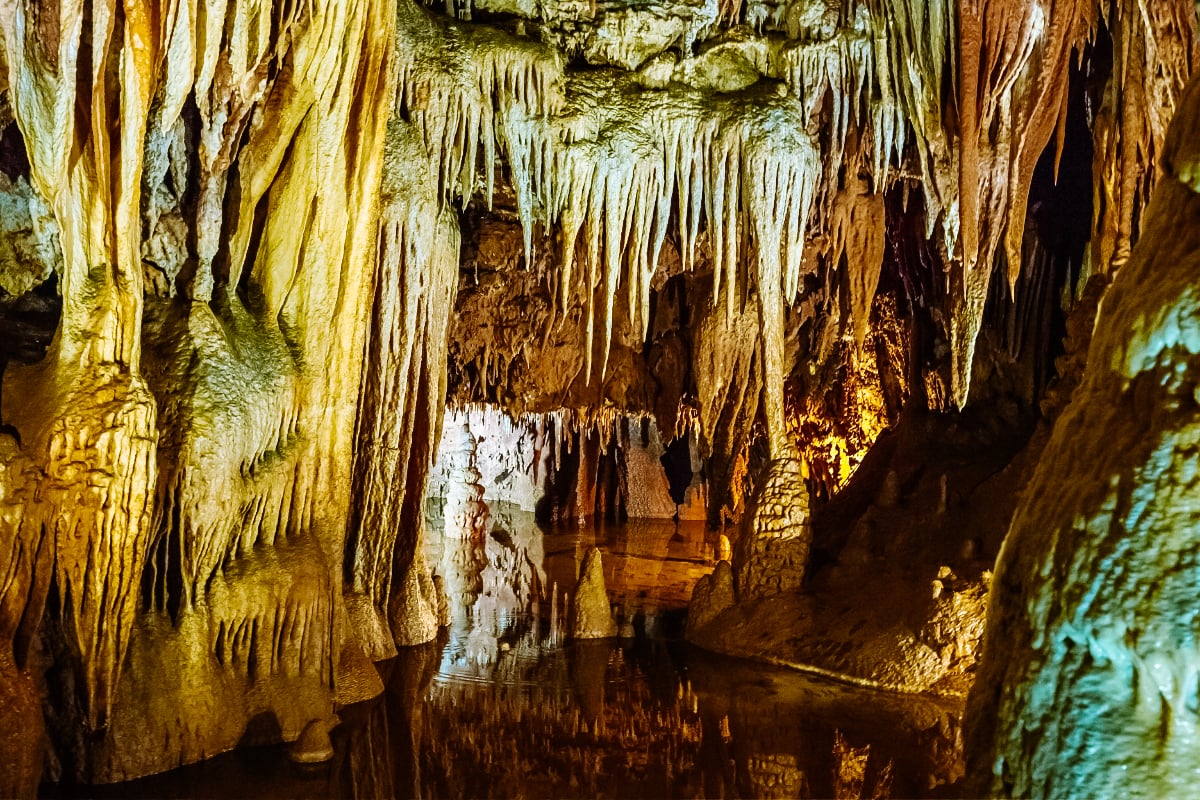
Practical tips for visiting the Baredine Cave
- Transport: the Baredine Cave is located about 6 km from Poreč, and is easily accessible by car. A well-marked path leads to the site.
- Clothing: Wear comfortable shoes and warm clothes, even if it is hot outside, it can be chilly in the cave.
- Admission: information on prices and opening hours can be found on the official website.
23. Kornati National Park
Kornati National Park, an archipelago of more than 140 islands, islets and rocks stretching across the azure waters of the Adriatic Sea, is one of the most beautiful places in Croatia.
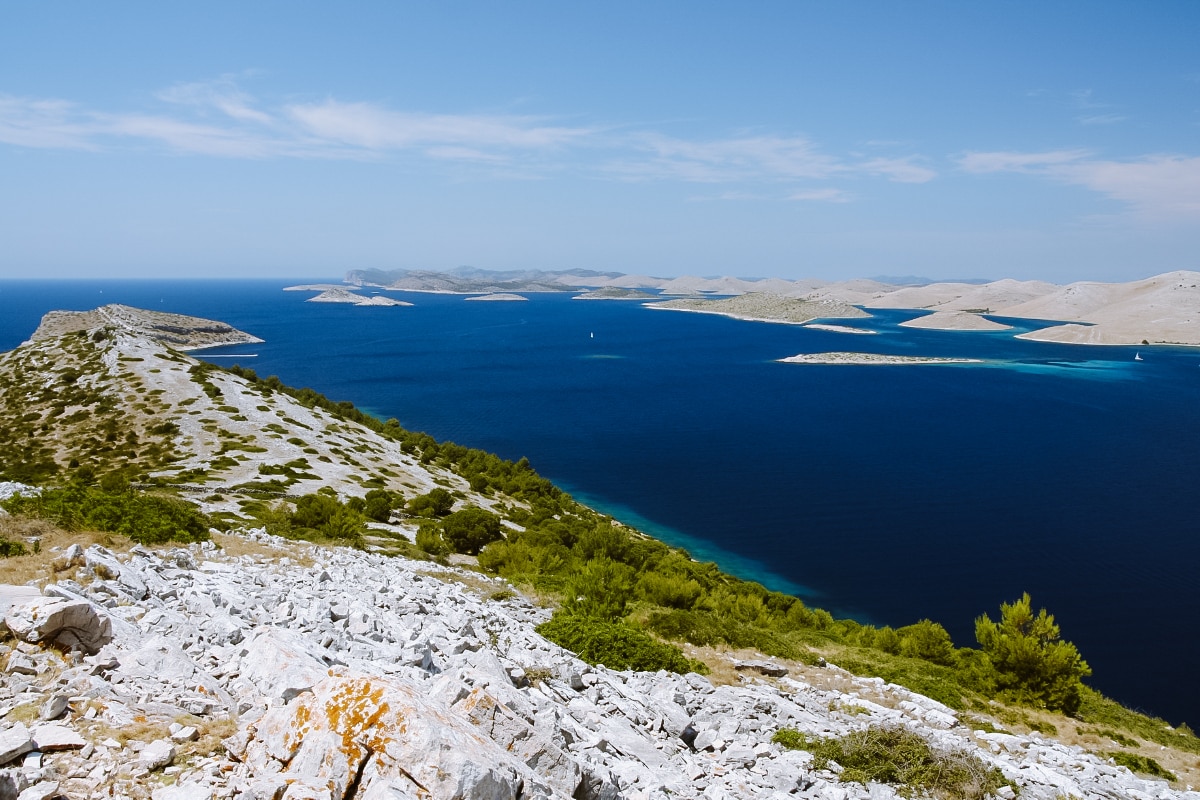
The Kornati islands are best known for their wild, untouched nature and impressive rock formations that rise right out of the sea. The waters around Kornati are a paradise for divers and snorkelers, with a wealth of underwater life including coral reefs, caves and sunken wrecks.
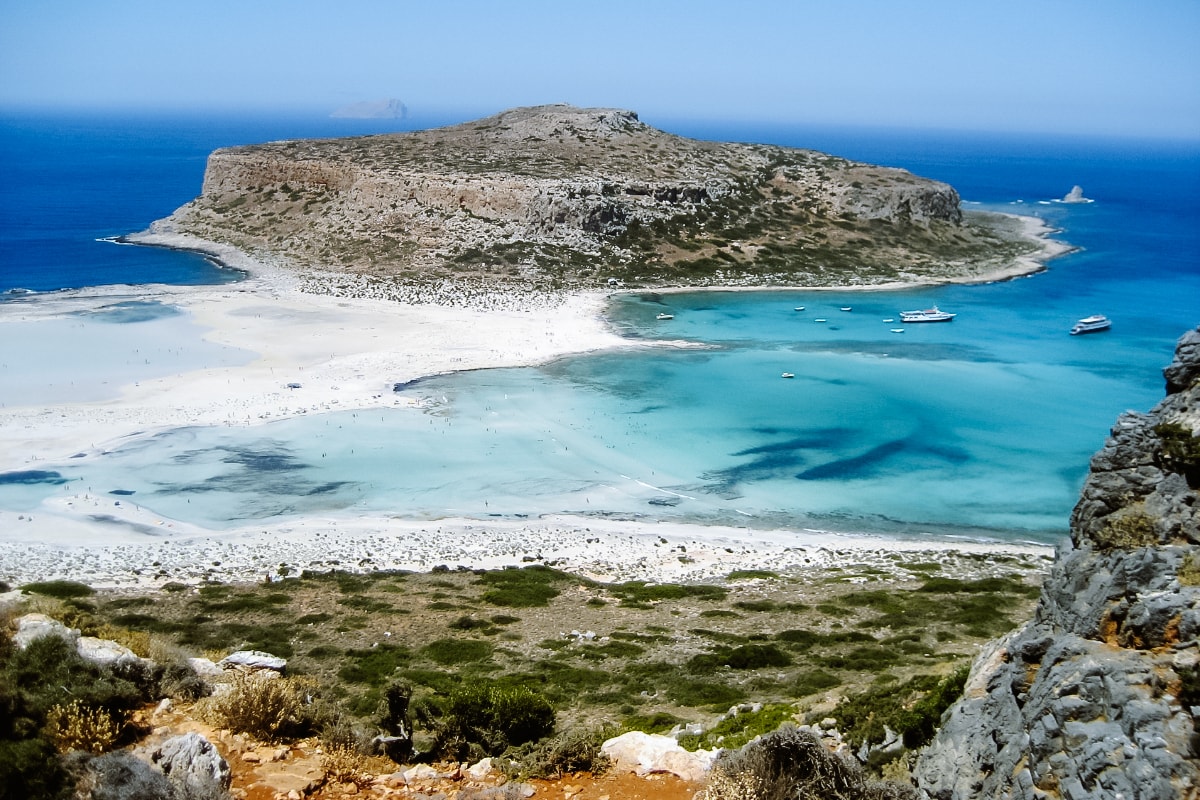
On the island of Kornat there are ruins of the Byzantine fortress Tureta from the 6th century, which offers a magnificent view of the surrounding sea.
Practical tips for visiting NP Kornati
- How to get: The Kornati Islands are accessible only by boat, with excursions organized from various Dalmatian towns including Zadar, Sibenik and Murter.
- Measure: There are no drinking water sources and limited services on the islands.
- Nature and Conservation: When visiting the park, it is important to stick to the marked paths and not to leave litter behind.
- Best time to visit: The best time to visit is spring and autumn, when it’s not too hot and less crowded.
Best things to do in Croatia on the map
HOW TO USE THIS MAP: Above you will find a detailed map with tips on the best places to visit in Croatia. Click at the top left of the map to see separate layers with highlighted locations. You can hide and show the different layers or click on the icons on the map to see the names of the places I mention in the article about the things to do in Croatia. If you want to save the map, star it. For a larger version, click on the icon in the upper right corner.
The best booking resources for holidays in Croatia
Via Booking.com we search for all accommodation. It is the largest accommodation portal in the world and you will find everything from modern hotels, cosy guesthouses to seaside villas.
Get Your Guide is a huge booking system for buying tickets, guided tours and all sorts of activities. In one place you can read other travellers’ experiences and book tickets to the Vatican Museums, a cruise in Greece or a desert safari in Dubai.
These were our picks for the best things to do in Croatia. Do you have a question? We’ll be happy to answer it in the comments below. Have a safe journey and Doviđenja!
More information about Croatia
CROATIA: Get inspired by the best sea destinations in Croatia. We’ve also put together some tips for the most beautiful Croatian islands.
Here is a detailed guide on how to drive to Croatia (fees along the way, route, map and other tips).
The Makarska Riviera has some of the most beautiful beaches in Croatia. Take a look at our travel guide to Split.
GREECE: Are you more interested in Greece? Where to go to the sea in Greece we share in the next article. Santorini is one of the most beautiful islands in Greece – in this Santorini travel guide you’ll find all the tips on how to get here, what to see, the best beaches and other useful information.
